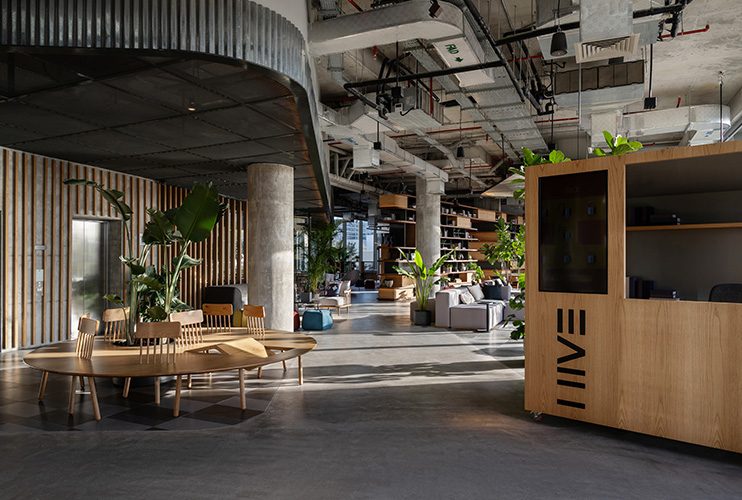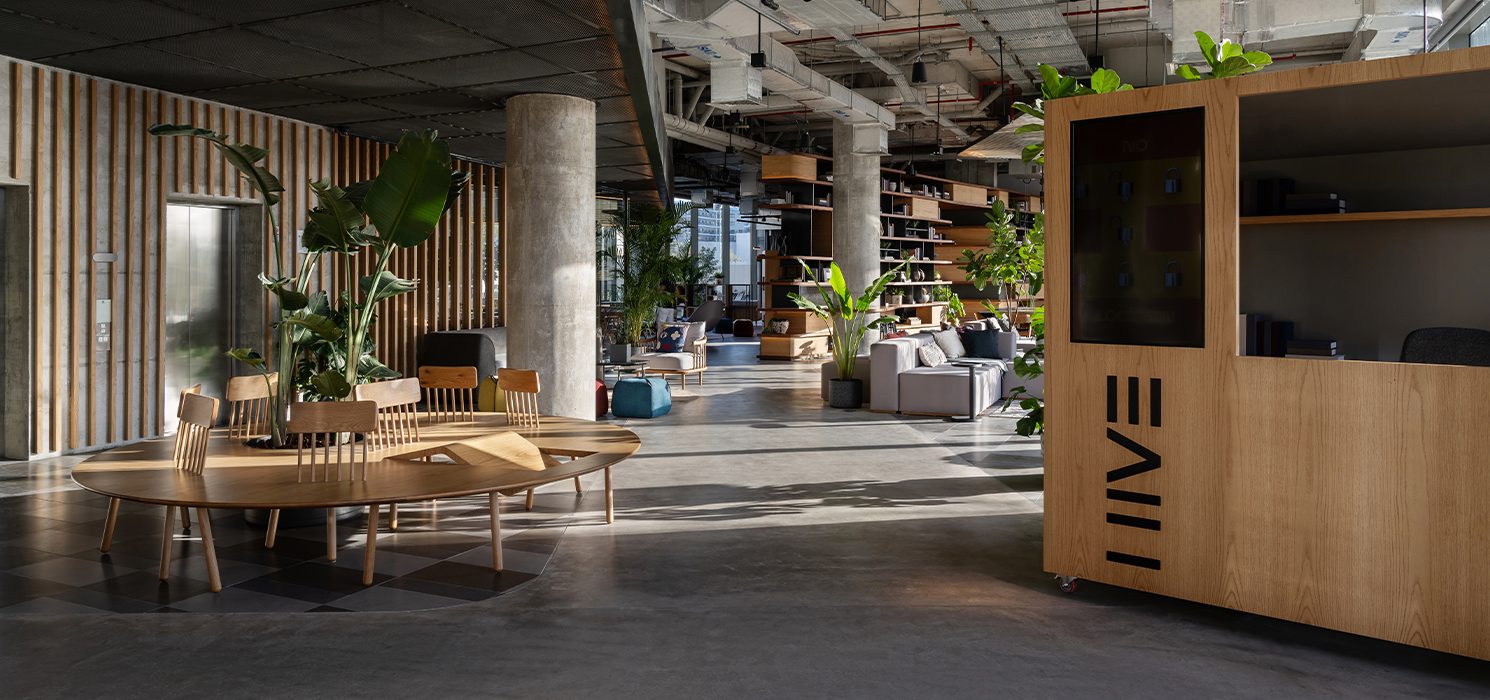Reimagining Hospitality: the role of PMS integration in smart access ecosystems
The future of Hospitality lies in integration. A connected ecosystem of smart systems enables hoteliers to deliver the kind of experience today’s guests expect: personalised, efficient, and secure.
The future of Hospitality lies in integration. A connected ecosystem of smart systems enables hoteliers to deliver the kind of experience today’s guests expect: personalised, efficient, and secure.
In today’s competitive Hospitality landscape, guests’ expectations are higher than ever. Travelers’ demand seamless, contactless, and personalised experiences from the moment they book to the moment they check out. Behind the scenes, this requires deep integration between the systems that power hotel operations – especially the Property Management Systems (PMS) and smart access control solutions.
At Salto, we believe that access control is no longer just about security and accessing hotel properties; it’s about enabling frictionless, digital-first guest journeys that begin before guests even walk through the door.
So let’s explore the critical role of PMS platforms, the growing importance of integrating them with smart access systems, and how Salto’s innovative ecosystem drives the future of hospitality.

PMS: the heart of hospitality operations
A PMS is essential software that manages the day-to-day operations of hotels, resorts, and other hospitality properties. It’s the central nervous system and digital heart of any modern hotel, handling everything from bookings, guest profiles and stays to room allocations, payments, housekeeping, and more.
But while the PMS handles operational data, it becomes truly powerful when integrated into a wider digital ecosystem – particularly with access control systems like the smart solutions offered by Salto. That’s when your PMS unlocks new levels of convenience, security, and efficiency, streamlining workflows and consolidating operationally critical information.
However, the hospitality industry is witnessing significant shifts in PMS technology. Legacy, on-premise software is giving way to cloud-based, API-enabled platforms that offer greater flexibility, scalability, and integration capabilities. These modern PMS solutions do more than handle operational tasks. They’re evolving into dynamic tools designed to enhance the overall guest journey – from personalised bookings and Digital Keys to communications, payments, loyalty programs, and seamless experiences throughout their stay.
Cloud-based PMS systems enable instant data synchronisation across departments and third-party solutions alike. This empowers hotels to respond quickly to guests’ needs and optimise resources. It’s signaling a shift in the role of the PMS from a standalone tool to a comprehensive hub that facilitates connectivity across various hotel systems and devices.
A tightly integrated PMS and access control solution allows hoteliers to streamline check-ins, reduce waiting times, improve room turnover efficiency, and deliver more secure, automated access, from staff keycards to mobile guest keys.

Smart access and connected rooms: the new guest experience standard
Access is no longer just about opening the right doors – it’s now a touchpoint that defines the entire guest experience.
These days, guests increasingly expect:
- Contactless check-in/check-out.
- Mobile digital keys, including wallet keys, for fast, frictionless access without compromising security.
- Instant room changes without having to visit the front desk.
- Secure, personalised access to amenities, such as spas, pools, parking, gyms or locker rooms
- Smart room features to communicate and adjust settings automatically based on occupancy and guest preferences.
Salto’s smart access solutions – including our industry-leading JustIN Mobile Key technology – support these expectations with reliable, secure, scalable, and high-design systems tailored for the hospitality sector.
Integration that works – seamlessly
Salto solutions integrate natively with the world’s leading PMS platforms, including the following:
- CHAR: Innovative, all-in-one PMS with an innovative approach.
- Clock PMS: Complete and integrated cloud-based hotel management.
- Cloudbeds: An all-in-one hospitality platform for independent properties.
- eZee: Combines hospitality software platforms to boost revenue.
- Guestline: For synchronised guest experiences.
- GuestUP: All-in-one, simplified guest operations and front desk management.
- HotelFriend: Management platform for hotels and vacation properties.
- IDS Next: On-premise and cloud PMS for next-level compatibility.
- Lobbi by Mancloud: Web-based PMS that simplifies and automates operations.
- Mews: The cloud-based PMS designed for automation and flexibility.
- Oracle OPERA: the enterprise-grade PMS used by many global hotel brands.
- Previo: Supports automated, keyless guest experiences.
- PriorityKey: End-to-end operations, guest management and access control.
- Protel: Simple-to-use interface that saves time.
- RoomRacoon: Powerful, all-inclusive solution for independent hoteliers.
- RMS: The cloud-native PMS software for better hospitality management.
- SabeeApp: Cloud-based tool for modern hotels.
- SIHOT: Integrated access control for the world’s largest hotel chains.
- Stardekk: For seamless, keyless check-in experiences.
- StayNTouch: Pioneering tool with relationship-building capabilities.
- WebRezPro: Simplifies direct bookings and overnight lodging operations.
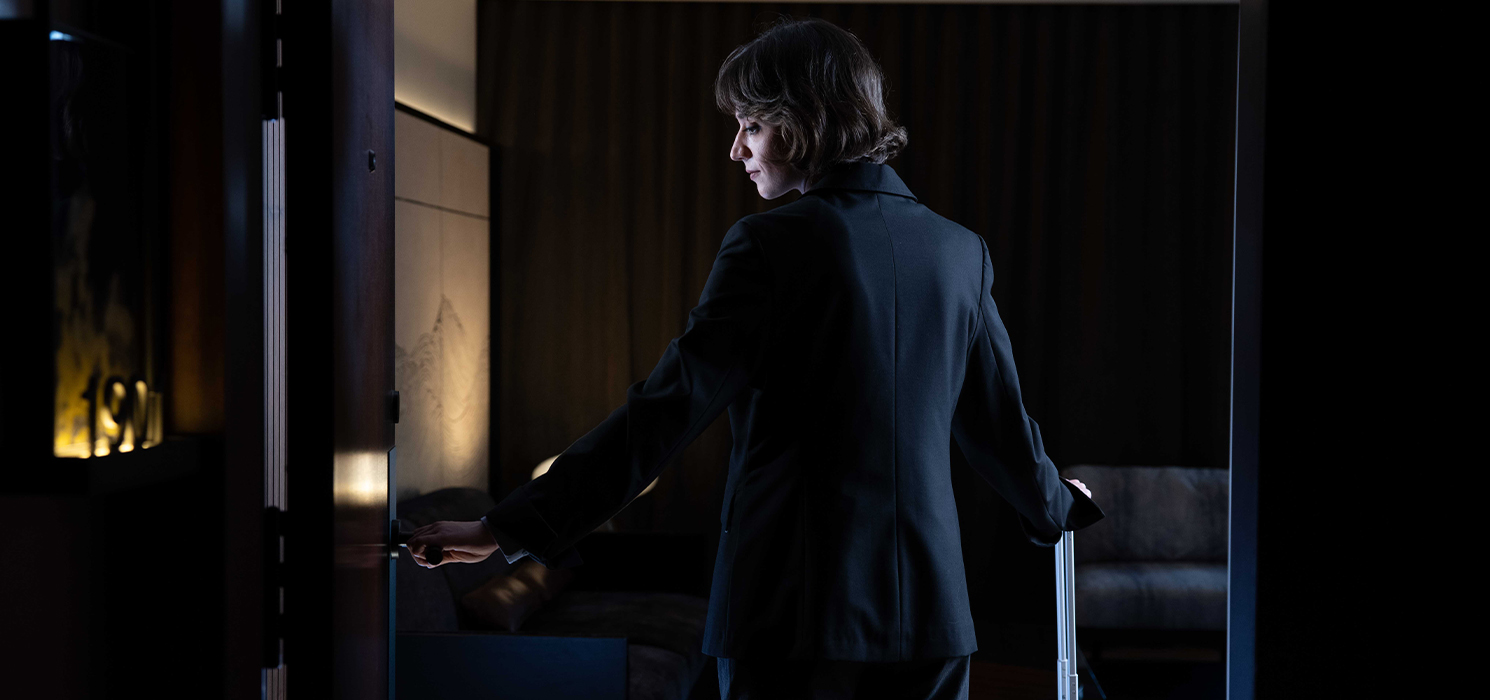
Unlock a world of functionality
These integrations power a seamless flow of data between property management and access control, enabling features such as:
- Automatically generate guest room keys upon check-in: Guests receive Digital Keys immediately after booking confirmation. Meanwhile, cancelled bookings and completed check-outs prompt automatic key deactivation.
- Revoke or update keys in real time: Instantly update room assignments and access permissions. Changes made in the PMS are immediately reflected in door locks, enabling smooth adjustments for room changes, for example.
- Total security and control: Assign staff, guest, and visitor access permissions based on roles, access needs, and schedules. Eliminate manual keycard programming, data duplication, and delays.
- Key delivery: Ensure secure delivery of mobile keys through the hotel’s own apps, or via email or SMS. Guests receive encrypted mobile keys by their preferred method, while operators can access detailed audit trails that capture and store every access event.

Top benefits beyond access control
When your access system and PMS are connected, the benefits extend far beyond convenience.
- Operational efficiency: Eliminate repetitive manual tasks at the front desk and in the back office, and spend less time troubleshooting.
- Oversight and auditability: Generate real-time access logs and user permissions for complete visibility of your access control ecosystem.
- Faster turnover: Housekeeping gets access based on real-time room status. No need to knock on doors – staff can head straight to rooms they know have been vacated.
- Scalability: New doors, users, PMS integrations, or even properties can be added as your operation grows.
- Faster check-ins: Let guests skip the queue and head straight to their room.
- Guest satisfaction: Reduced waiting times generate an immediate positive initial impression and give guests more control.
- Improved security: Say goodbye to lost, stolen, or improperly shared keys.
- Sustainability: Digital Keys eliminate the need for plastic keycards or metal keys, appealing to eco-conscious travellers.
- Digitalising the journey: Mobile keys, on-the-go check-in, and seamless check-out provide the digi-first experience many guests now demand.
Salto’s smart locking solutions, access control platforms, and open API ecosystem integrate holistically to ensure your hotel management system grows and adapts with your business.
Why Salto for hospitality?
Salto Hospitality’s next chapter is connected. A connected ecosystem of smart systems – PMS, Guest Room Management Systems (GRMS), access control, and guest apps – enables hoteliers to deliver the kind of experience today’s guests expect: personalised, efficient, and secure.
With over 20 years of experience and deployments in more than 90 countries, Salto is a trusted partner for hotels of every size, from boutique properties to international chains.
Salto Hospitality solutions are:
- Smart: Standalone or networked, Salto solutions leverage Digital Keys and smart access management for optimised operations.
- Secure: Our solutions are certified and provide end-to-end encryption.
- Flexible: They support any door or access point, from guest rooms to back-of-house and shared spaces, with customisable options to adapt to any decor and ensure easy installation.
- Reliable: Our solutions offer 24/7 visibility from anywhere, at any time.
- Future-proof: They utilise cutting-edge technology, from wireless connectivity to Bluetooth LE or NFC-powered entry and cloud-enabled access.
- Scalable and connected: Integrate PMS and energy management systems and manage access to lockers, parking areas, and other amenities.
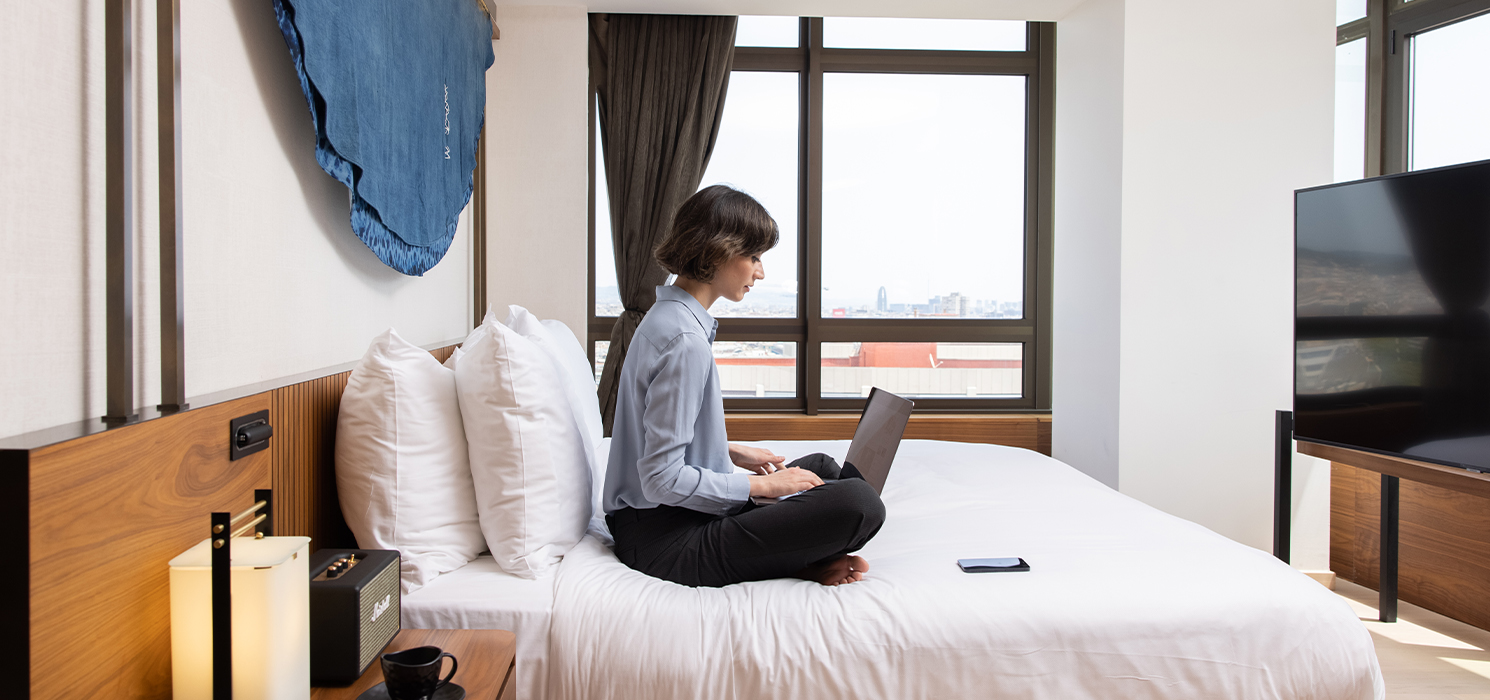
With Salto, your access control system is more than just a door lock. It’s a strategic enabler of a better hospitality experience, for guests and operators alike.
Ready to unlock the future? Explore how Salto’s PMS-integrated smart access solutions can elevate your guest experience and streamline hotel operations here.


Salto and Mews Digital Key, unlocking next-level guest experiences
Benefits of the new integration include operational time savings and faster arrivals for guests, powering exceptional experiences featuring digital key technology.
Benefits of the new integration include operational time savings and faster arrivals for guests, powering exceptional experiences featuring digital key technology.
Mews has expanded the compatibility of its Digital Key solution to include Salto smart locking technology. This integration enables hoteliers using Salto’s advanced access control system to deliver a truly seamless, contactless guest experience through Mews Hospitality Cloud.
Once seen as a luxury, digital room entry is fast becoming a standard guest expectation. With this latest enhancement, hotels using Salto smart access for hospitality can now offer their guests keyless entry directly from their mobile devices, simplifying check-in, improving security, and freeing up front desk teams to focus on enhancing the guest experience.
“Every step of the guest journey should be effortless”
“With Salto smart access for hospitality compatibility, more properties can reduce the friction around arrival and check-in. Digital Key is a win-win because it’s as much about operational efficiency as it is about improving guest satisfaction.” said Matt Welle, CEO of Mews.
The Salto Space integration is already live at YUST, a Belgian hospitality brand that combines short and long stays in a unique hybrid model. In its first month, the Antwerp property saw 12% of all arrivals check in via Digital Key, despite no promotional push. Currently, 64% of guests with an active key have used it to open their room door.
“We’re only tech-focused when we can use tech to improve the guest experience,” said Dirk Van Gompel, CTO of YUST. “Digital Key makes it easy for guests to go straight to their room, while creating real time savings for our team – who can then focus on building real human connections.”
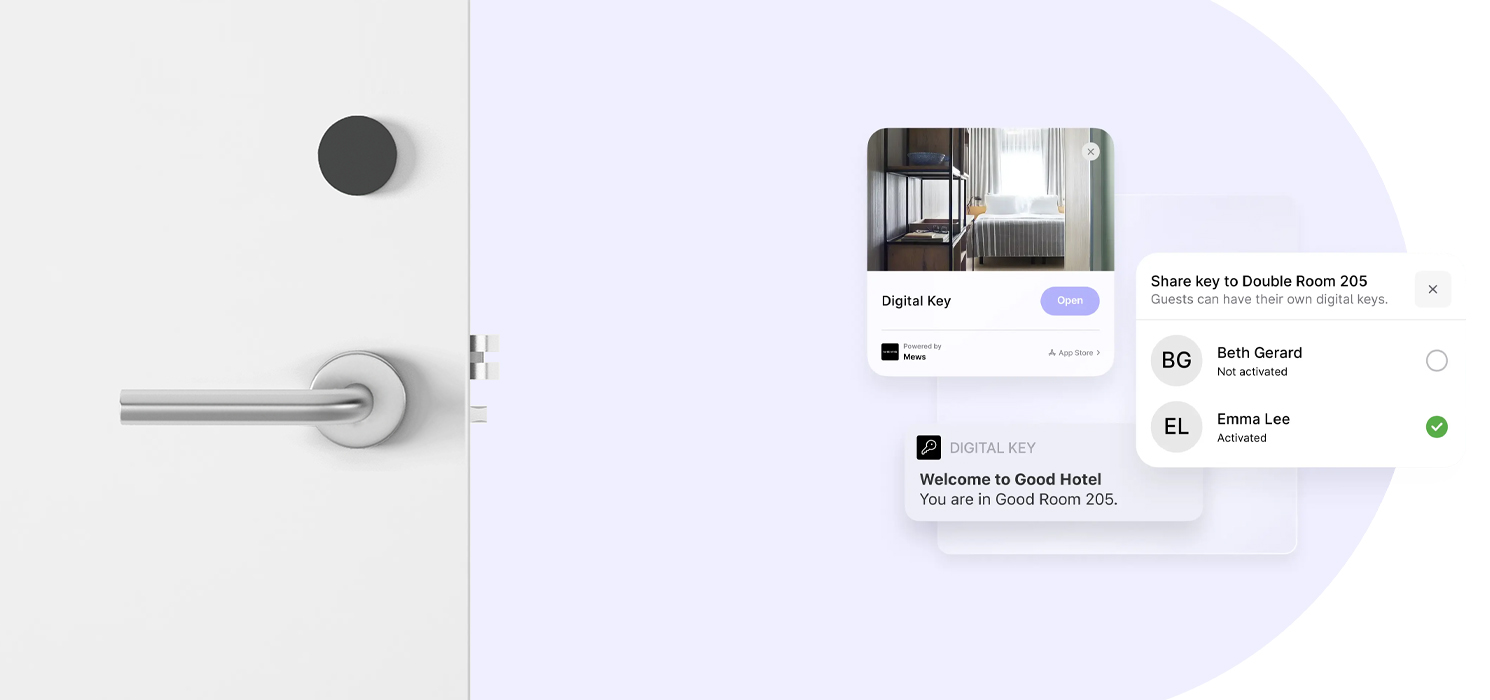
The benefits of this new integration include:
- Faster check-ins: Guests skip the queue and head straight to their room.
- Improved security: No more lost keys.
- Operational efficiency: Fewer manual processes mean fewer staff hours spent troubleshooting.
- Sustainability: Digital keys eliminate the need for plastic keycards, appealing to eco-conscious travellers.
- Digitalizing the journey: Mobile keys, on-the-go check-in, and seamless check-out
“At Salto, we believe access to technology should be so convenient that guests actually enjoying using it,” said Nora Urquiza, Hospitality Solutions Business Lead at Salto Systems. “Our integration with Mews reinforces our commitment to delivering a seamless, secure, and modern digital experience through strong technology alliances.”

Mews Digital Key is fully integrated into the Mews Hospitality Cloud, allowing properties to automate and personalize the entire stay, from online check-in and upselling to contactless room access and smooth, automated check-out.
Looking to learn more? Click here to discover more about Salto’s smart access solutions for Hospitality, and follow us on LinkedIn or Instagram for the latest updates.

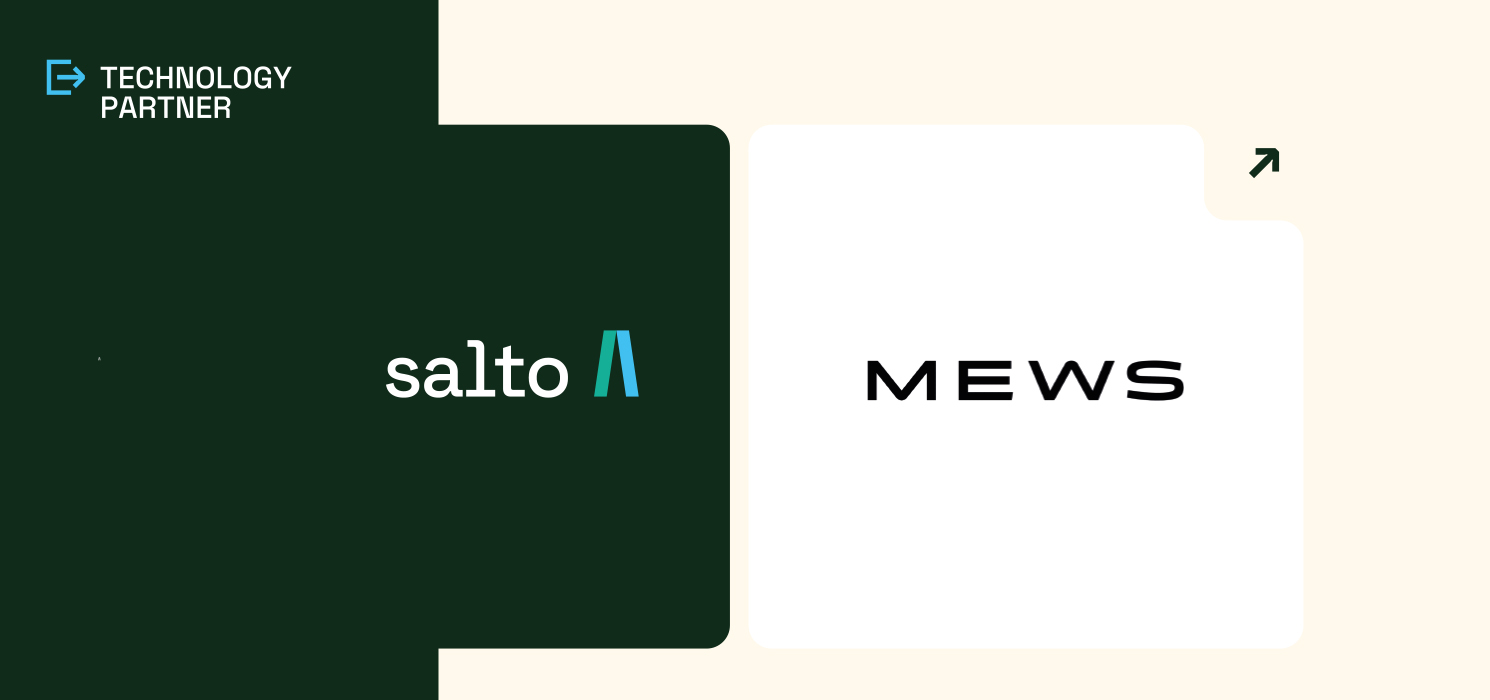
Secure today, thrive tomorrow: Gallagher Security and Salto smart access, your campus guardians
Access control and security plays one of the most critical roles in protecting people in educational environments. Secure and control every space and ensure peace of mind for everyone, from students and staff to parents and visitors with Salto and Gallagher integrated solution.
Access control and security plays one of the most critical roles in protecting people in educational environments. Secure and control every space and ensure peace of mind for everyone, from students and staff to parents and visitors with Salto and Gallagher integrated solution.
Universities in Australia and New Zealand face many challenges when it comes to securing their campuses and managing access for staff, students and visitors. They need a solution that is reliable, scalable, flexible and cost-effective, and one that enables them to go completely keyless. That's why Salto and Gallagher are teaming up to offer the best of all worlds: a robust and integrated security and access system that covers every door, locker and space on campus, without a keyring in sight.
This landmark partnership puts the combined expertise of two global security giants together to provide a solution for universities and large education providers that cannot be matched.
With over 30 years’ experience in the education sector, Gallagher is a trusted provider of integrated security solutions for universities and other education providers. Their award-winning site management platform, Command Centre, offers alarm, access and perimeter security, and cybersecurity in one single product, and their responsive tools enable real-time identification, location, and response to critical events, ensuring swift action during emergencies. Command Centre also enables efficient management of staff and student credentials, visitor passes, parking permits and more.

Seamless integration with Gallagher
SALTO complements Gallagher's system by extending its reach to all doors and access points on campus, regardless of their location, wiring or lock type. This is achieved via SALTO's market-leading wireless smart access solutions, which includes sophisticated access solution software, durable and sustainable hardware including cylinders, lockers and padlocks, combined with effortless and cost-effective installation and maintenance capabilities.
Gallagher's and SALTO's systems are seamlessly integrated to provide end users with a single and comprehensive user interface. For sites using Gallagher, this means no additional training, or credentials are required to manage the Salto smart access platform.
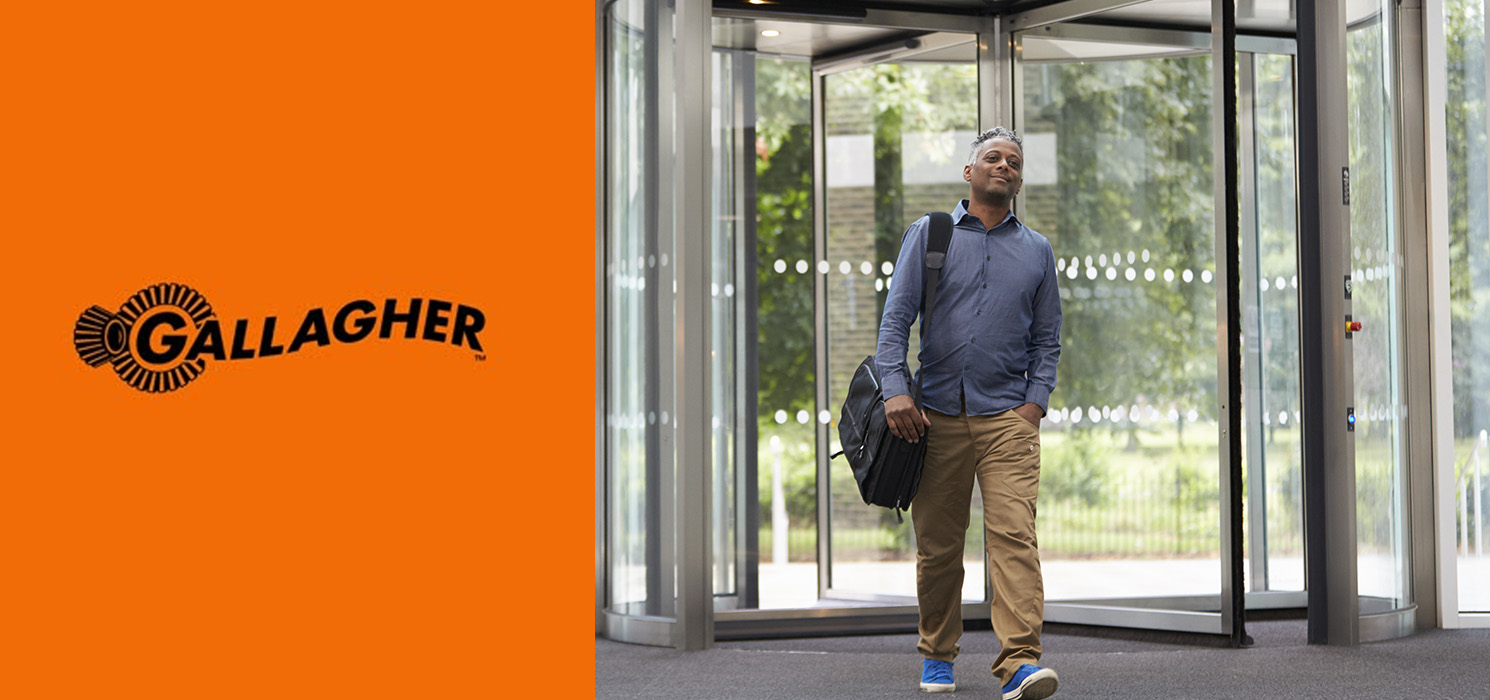
Integration benefits
Combining the Salto and Gallagher systems will add agility to a university’s security, by allowing universities to optimise access to any door, locker, or cabinet without any key and in real-time. This Is also achievable in a retrofit situation, where Salto's wireless smart access solutions enable a very cost-efficient installation.
By integrating Salto and Gallagher, universities can create flexible and dynamic spaces anywhere - where access rights can be changed on the fly according to the needs of the users and the activities, and where modern credentials such as a key card, fob or mobile phone key can be used on any door.
Together, Salto and Gallagher provide a complete solution to boost security and efficiency on campus. By choosing Salto and Gallagher, universities can benefit from:
- Enhanced security for staff, students, and visitors
- Simplified access management for all doors, lockers, and spaces
- Complete eradication of mechanical keys
- Improved utilisation of campus resources and spaces
- Reduced operational costs and environmental impact
- Save cost on installation, power supply, and data cables (when not required)

Enhanced security delivered
Over 100 schools, colleges and universities centres have taken advantage of Salto’s access control systems and Gallaguer security solutions creating a safe learning environment for educators at every level of instruction. Gallagher’s and Salto integrated education solutions simplify the process with one central management platform, making it easier than ever to control and protect the sanctity of the student experience.
Secure today, thrive tomorrow. That is the power of Salto and Gallagher, your campus guardians.
Looking to learn more? Click here to discover Salto’s smart access solutions for Education and your campus security, and follow us on LinkedIn or Instagram for the latest updates.


Give your guests a digital key without downloading an app
WebKeys: smooth, seamless, and contactless intelligent access control solution to enhance the guest experience. No APP download is needed.
WebKeys: smooth, seamless, and contactless intelligent access control solution to enhance the guest experience. No APP download is needed.
The hospitality industry is constantly evolving, and technology is increasingly becoming essential to enriching guest experiences. As the industry gets more data-driven and customer-centric, hotels need to keep up with the shifting customer preferences, emerging trends, and new technological innovations. Guests now expect to enjoy fast and easy digital solutions during their stay – customer satisfaction will inevitably drop otherwise.
In recent years, one of the most significant advancements has been the introduction of NFC and Bluetooth digital key technology: they have eliminated the need for physical credentials or plastic cards. Instead, guests are provided with a secure keyless and contactless digital experience.
With the transformation of hospitality well underway, SALTO Systems is excited to announce the WebKeys release with our technology partner FLEXIPASS, a leading provider of Keyless Guest Experience solutions. Through this collaboration, we aim to revolutionise the hospitality industry in much more than a keyless mobile experience.
The rise of keyless and digital smart access solutions in hospitality
Traditionally, hotels and resorts have relied on physical smart cards or key cards to grant access to guest rooms, often leading to inconveniences such as lost keys or long check-in processes. Digital key technology has emerged as a game-changer: it allows guests to access their rooms using their smartphones or smartwatch devices – all contact-free. While this technology has been available for some time, the COVID-19 pandemic boosted its popularity and accelerated its adoption in the hospitality industry, bringing keyless access control to the mainstream.
This high-tech hotel lock system enhances convenience while improving security and guest satisfaction. Smart, keyless, and digital access technology provides a simple and modern access option that guests anticipate now more than ever. The implementation of digital keys or key cards gives guests the safe, instant, and hassle-free access they deserve.

Introducing the SALTO and FLEXIPASS WebKeys experience
FLEXIPASS has established itself as a trusted name in the field of Guest App and WebKeys access control solutions. Their cutting-edge technology allows hotels and other hospitality establishments to implement keyless access control easily and seamlessly. By integrating FLEXIPASS's solution into our technology platform, SALTO is set to bring a new level of convenience, efficiency, and hotel security to our clients and their guests.
- No app needed. Progressive Web App (PWA) technology ensures a simple yet highly secure solution.
- Fast, open doors in seconds. Smart, keyless, and digital access for guests means that it takes just seconds to open a door with just the tap of a button.
- Frictionless access. A simplified check-in/check-out system enhances guest experiences.
- Fully connected. Easily integrate with SALTO’s smart electronic door locks for combined speed and ease of access. WebKeys are also compatible with applications in SALTO’s Space Hospitality management solution ecosystem.
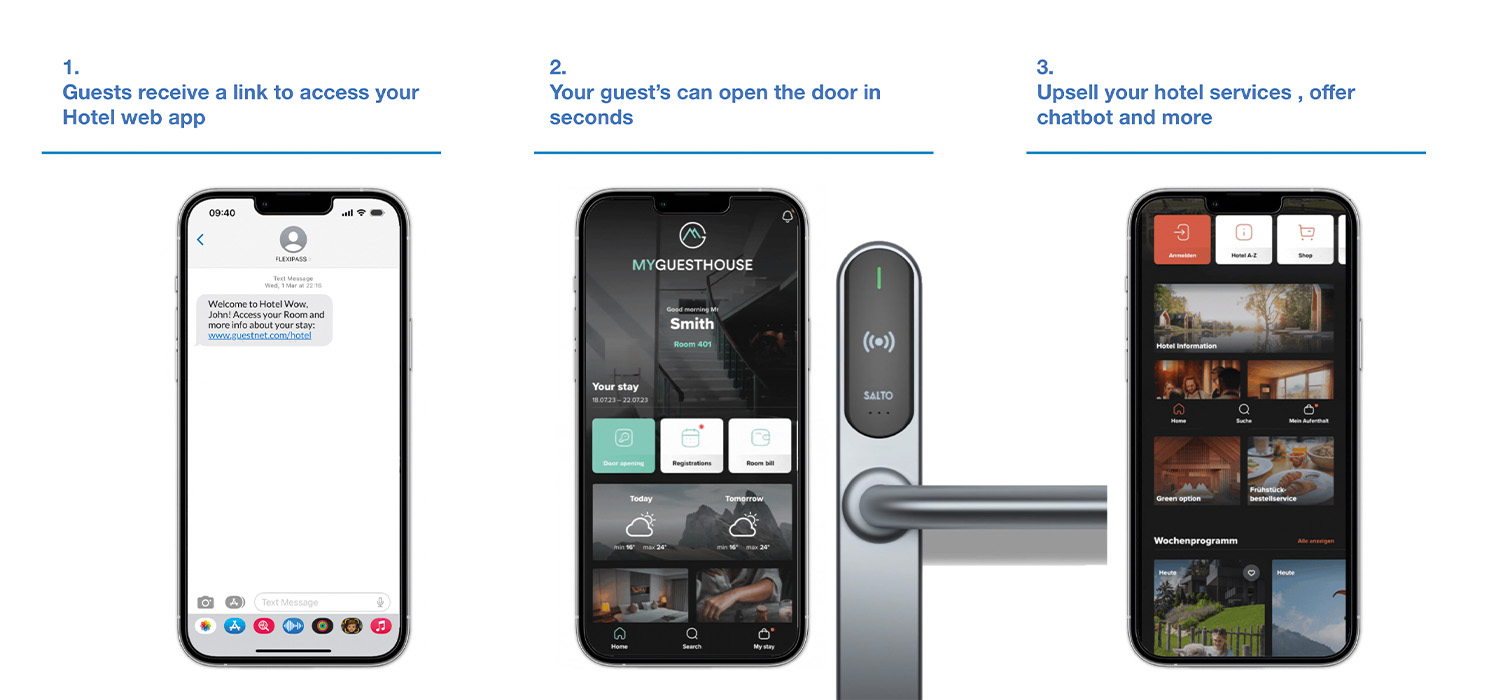
The Top 5 benefits of our WebKeys access control solution
Combining easy-access digital keys and smart guest rooms with unified property management systems that protect individuals and assets is a unique challenge for every hospitality business – from luxury to midscale hotels, independent to convention and conference hotels. But, with our new WebKeys access control solution, you can help guests feel safer, optimise operations, and effortlessly onboard smart access management into your existing processes.
- Seamless guest experience. With WebKeys access control, guests can unlock their rooms using smartphones without ever installing an app. They no longer need to wait in long queues to check in or worry about losing physical keys. This easy, frictionless experience sets a positive tone right from the beginning of their stay.
- Enhanced security. WebKeys access control eliminates the risks associated with physical guest key cards. Instead, guests can securely access their rooms using their smartphones. Additionally, access permissions can be easily managed, allowing hotel staff to grant or revoke access remotely.
- Hotel operations efficiency.
By eliminating the need for physical key management and traditional check-ins, hotels can streamline and optimise their operations. This allows staff members to dedicate their time to more essential tasks and provide a true welcome to new guests. Moreover, with real-time access control data, hotel management gains valuable insights into guest room status or needs.
- Sustainability and cost savings. Moving away from physical keys reduces the environmental impact of one-time plastic key card production and disposal. Moreover, hotels can save costs associated with key card printing and replacement.
- Drive guest loyalty. Smartphone usage is now almost universal, and WebKeys access control offers guests the convenience of smart, contactless hotel locks that open with just the click of a button. This can encourage guest loyalty – they will opt for the easy, reliable choice and book in hotels that ensure their overall satisfaction.
The future of Hospitality technology
As the hospitality industry continues to embrace technological advancements, the integration of WebKeys access control systems marks a significant milestone. Through our partnership with FLEXIPASS, we are at the forefront of this transformation, empowering hotels and resorts to deliver a seamless, frictionless, and keyless digital experience to their guests. The future in hospitality is bright, and hotels should embrace innovations that improve the lives of staff and guests alike.
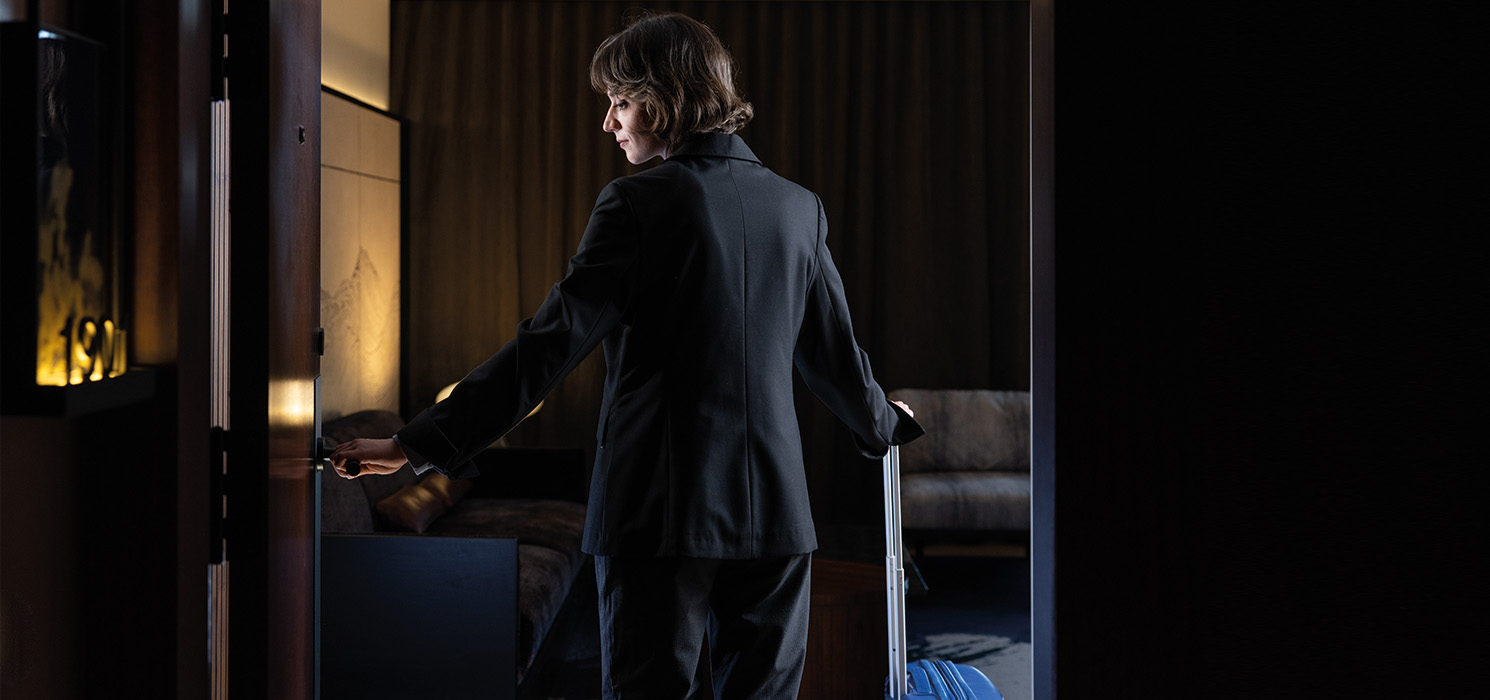
The collaboration between SALTO’s technology platform and FLEXIPASS brings forth a new era of convenience, security, and operational efficiency in the hospitality industry. By implementing WebKeys access control, hotels can optimise their operations, strengthen security measures, and elevate the guest experience overall. We are proud to be part of this technological revolution and look forward to seeing the positive impact it will have on the industry as a whole.
Tell us your style and project, and SALTO will match you with the right designer handle and door hardware to create a design that fits your personality. Follow us on LinkedIn or Instagram for the latest updates.
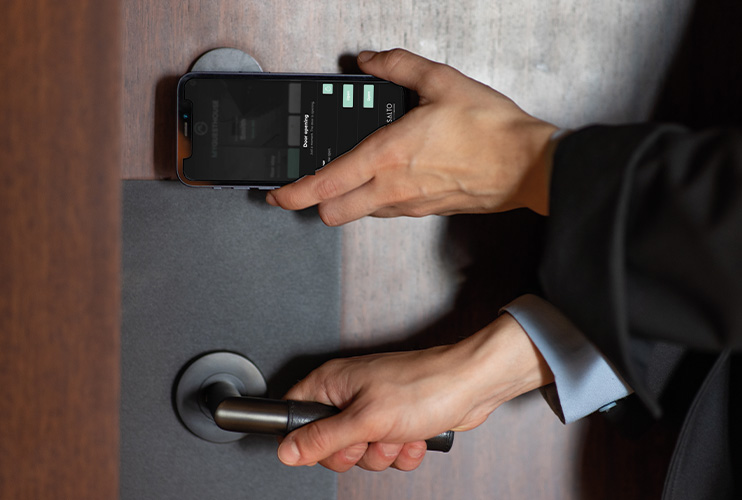
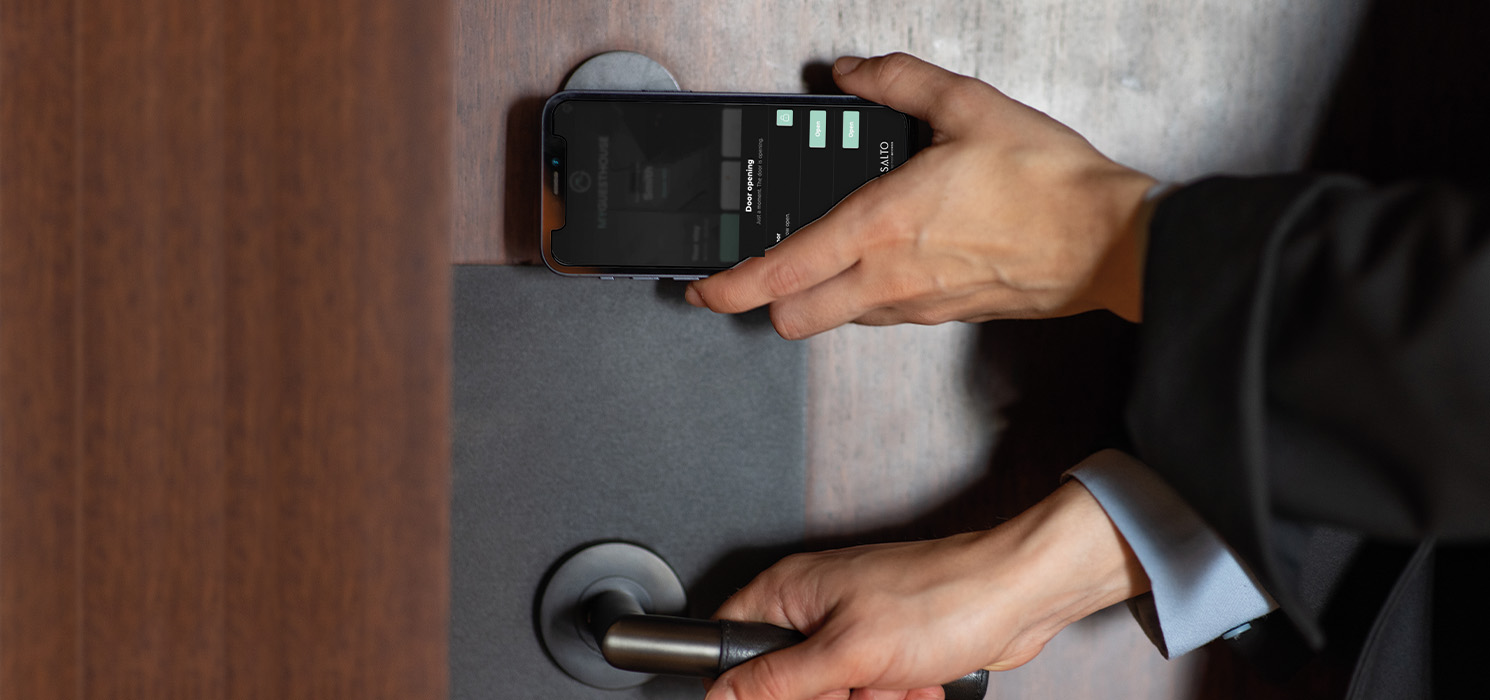
How OfficeRnD and SALTO KS’ technology partnership is changing the landscape of flex work
We reached out to Michael Everts, Product Marketing Manager for OfficeRnD Flex, and asked him about the future of flex work, OfficeRnD’s mission, and how SALTO KS fits into place to help them achieve their goals.
OfficeRnD's integration with SALTO Keys as a Service’s cloud-based access control platform automates granting access to workspace members. For every company, staff member, or guest, access can be automatically matched to their membership or a pre-defined area. This ensures that people can only enter where and when they should, 24/7, while you can simultaneously keep track of notifications for specific events so that you're always up-to-date.
OfficeRnD focuses on reinventing flex and hybrid work management software. Combine this with SALTO’s solutions for workplace flexibility, and there are endless opportunities to optimize operations in a single informative overview.
We reached out to Michael Everts, Product Marketing Manager for OfficeRnD Flex, and asked him about the future of flex work, OfficeRnD’s mission, and how SALTO KS fits into place to help them achieve their goals.
Read ahead for our conversation with Michael!
- Please introduce yourself and tell us about your role at OfficeRnD.
My name is Michael Everts, and I am the Product Marketing Manager for OfficeRnD Flex. Before I joined the OfficeRnD team, I was an operator who used the software. I work with customers daily to promote our new features — and better understand their needs related to coworking and flex management.
- Could you please introduce your company to our readers?
OfficeRnD powers more than 2,500 locations worldwide to deliver better workplace experiences. Coworking and flex operators, asset managers, and landlords use OfficeRnD Flex to automate billing, make data-driven decisions, and improve their member experience. Every month, operators send out nearly 100,000 invoices and process over $140 million worth of revenue in the platform. Trusted by the largest flex brands like CommonDesk, Serendipity Labs, and Hub Australia — OfficeRnD Flex acts as the central hub that integrates with key workplace systems, saving operators time and allowing them to focus on scaling and growth.
- OfficeRnD’s mission is to “build technologies to power the future of flex and hybrid work”. What does the future of flex and hybrid working look like from your perspective?
We envision an office future where employees have more optionality. After working at home for years, employees are finally being given more choices regarding where to work physically. This was not the case at all in the past. Our mission is to ensure that the physical office is supported by top-notch digital experiences — from booking desks to scheduling meetings with colleagues and even payment and billing.
- OfficeRnD has several software solutions that power flexible working, for instance, your Hybrid Workplace Software and Desk Booking System, among others. How do these solutions cater to the needs of the modern workplace to ensure they run smoothly?
Our workplace software OfficeRnD Hybrid allows employees and managers to visually understand who is coming into the office on what days and where they will be physically working. Workplace usage analytics give office planning teams better insight into what space is needed and how much. Policies can be set up - to tell employees which days they need to work in the office. Employees even have the ability to book desks and offices through workspace apps they are already using, like Microsoft Teams and Slack.
- The company's main purpose is “to help you bring people together in vibrant, flexible, and collaborative workplaces”. What role does access control play in fulfilling this purpose?
Access control allows for secure automated access to office environments. As companies and communities grow and scale, it can be hard for operational teams to deploy and manage access. Access control ensures that the right people have the right access to the cor and makes the whole community more secure.

- Could you please describe the technology integration between OfficeRnD and SALTO KS for our readers?
OfficeRnD and SALTO KS’ access control integration allows operators to automatically sync members and employees to gain access to your space. This means that once the users are configured within OfficeRnD, they will automatically be synced to their corresponding access group in SALTO KS and be sent a Digital Key. This technology can also be applied to offices and meeting rooms. So, for example, if someone books a room at 10 am, they will get access to that specific room during their booked time.
- What is the most important feature of the integration?
The ability to sync members is absolutely the most important part of the integration. This ensures that active members have the correct office access, and when their membership is terminated, they will lose access and no longer be able to enter the space. This gives operators the ability to spend more time with their members and less on administrative tasks.
- What, according to you, are the key ingredients to creating a successful and smart hybrid workplace?
Workplace technology that integrates and talks to each other makes life easier for operators and members alike. This means fewer steps when setting up a new member at the space and not worrying about forgetting to turn off access control for that member when they leave.
- Which recent project is the OfficeRnD team most excited about at this moment?
OfficeRnD recently built an improved integration with SALTO KS that allows for Member Keys to be used from directly inside the OfficeRnD Member App. Member Mobile Access puts SALTO KS Digital Keys directly inside the OfficeRnD Mobile App to streamline door access for members and simplify the onboarding process for staff. This means one less app for members to download when onboarding with the space.
- Before we close, is there anything you’d like to add or inform our blog readers?
Access control is a critical part of the workspace infrastructure. The more automated operators can make the process, the less they will have to worry about maintaining a secure space.
As workers return to the office after working from home for years, they expect modern systems that provide instant access to the resources they book when they book them. The OfficeRnD and SALTO KS integration can help solve this problem for members and operators alike.
One such example is Salon Lane in Australia, Sydney’s first shared workspace for independent hair, beauty and wellness professions. This dynamic business sees members frequently moving through available spaces, and the integration between OfficeRnD and SALTO KS ensures the seamless provision of members' space access. Watch the video below to learn more about how this solution comes to life.
Thank you, Michael, for taking the time to answer our questions and shed light on the potential for our technology solutions to provide a smart and flexible hybrid workspace.
We look forward to what’s to come for this partnership!
Can’t get enough? Click here to learn about SALTO KS’ smart access solutions.
Follow SALTO Systems on LinkedIn or Instagram to keep up with the latest news in the world of access control.
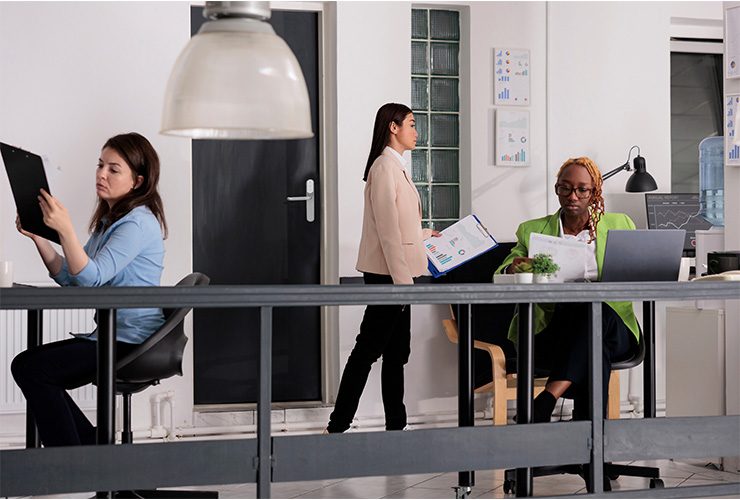
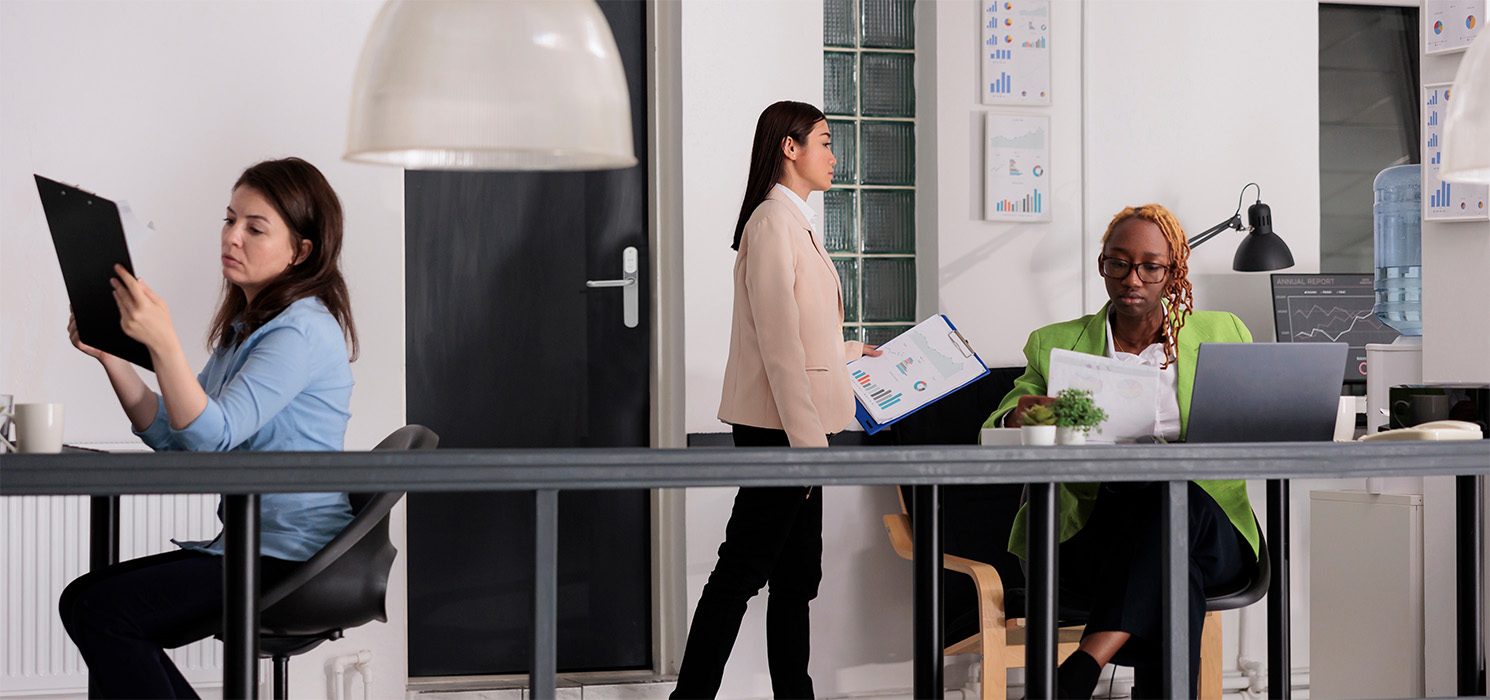
The Future of Coliving - Trends for 2023
We've partnered up with one of the world’s leading coliving consultants to launch a six-part monthly blog post series. In the final instalment of our 6-part Coliving Blog Series, we look to the future of coliving in the new year.
We've partnered up with one of the world’s leading coliving consultants to launch a six-part monthly blog post series. In the final instalment of our 6-part Coliving Blog Series, we look to the future of coliving in the new year.
Salto has been in the business of smart locks for 20 years, and we’re continually evolving to meet the needs of our clients. We believe that by understanding our users, along with the changing demographics, we can provide the best solution.
Leah has taken us on a dynamic journey of coliving through the previous five blog posts published in this series. We have discovered hybrid hospitality, glimpsed into senior coliving, and most importantly, covered the foundation of what coliving actually means. Today, in the final installment, our expert coliving consultant and Community Experience Specialist Leah Ziliak shares what to expect in 2023.
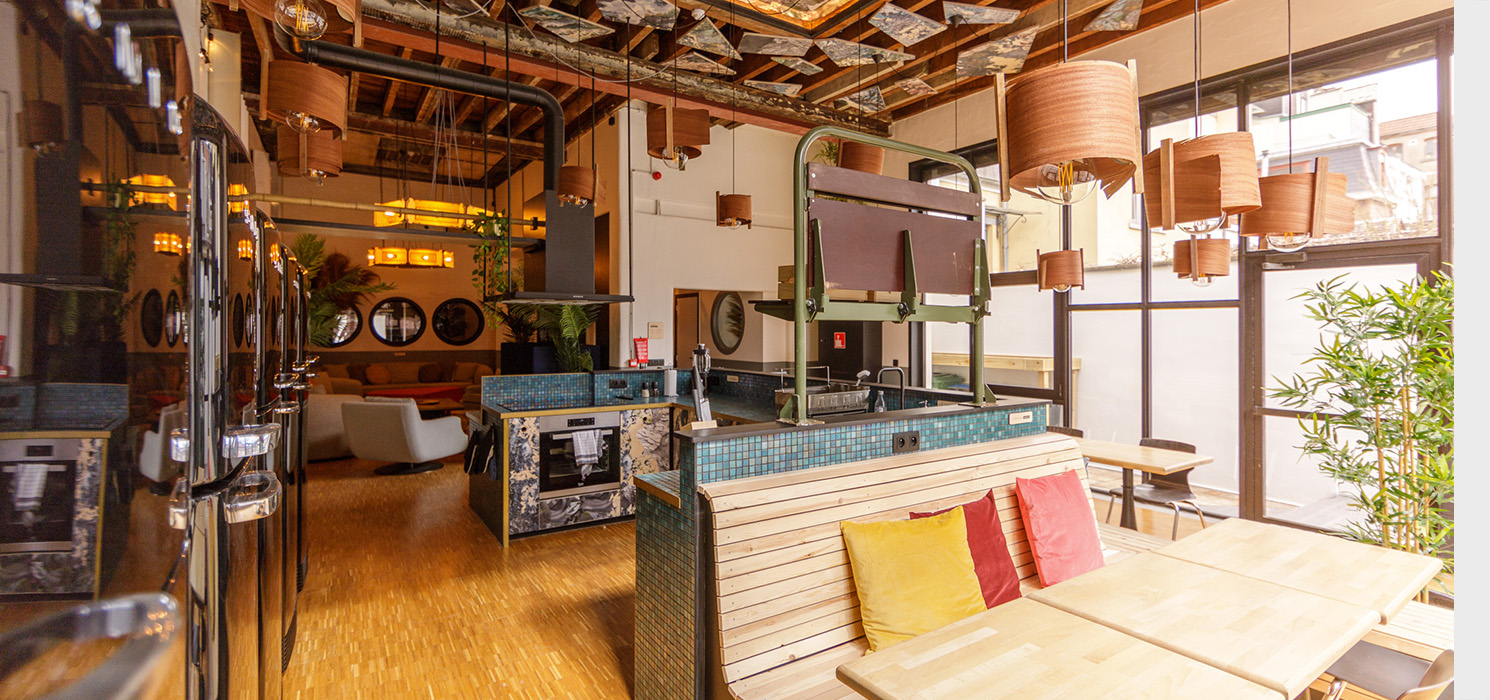
One of the fastest growing real estate classes out there, coliving, is gaining serious traction in all corners of the world. In 2020, the year of social isolation, many people wondered if coliving would survive the pandemic. Now, heading into 2023, the narrative has shifted completely.
Coliving is helping us leading happier, longer lives and might be the solution to some of the biggest issues our world is facing.
It’s clear that shared living is the future of housing. But what exactly does that future look like?
I’m from the U.S. originally, but I’ve been traveling as a digital nomad for the last several years. With my work, I’ve had the unique opportunity to experience coliving all over the globe. And, I’ve noticed that the coliving industry can look quite different depending on where you are in the world.
Let’s take a look at some of the key trends we see in the industry from a global perspective:
Trend #1: Coliving As A Luxury
If you’ve been following our blog series, by now you know that coliving isn’t just for students and hippies. Coliving is an elevated version of shared living and in some cases, a luxury experience.
If we take a look at the coliving industry in the U.S., many projects fall under this ‘luxury’ category. These types of coliving spaces tend to be located in larger cities like New York, San Francisco, and Chicago and come with more upscale amenities than you would expect in a traditional shared living space. Think rooftop terraces, fitness centres and in-house cafes, with furniture that is less ‘budget-friendly-IKEA’ and more ‘West-Elm-chic.’
Treehouse Coliving in Los Angeles, for example, has a professional-grade production and recording studio on-site for aspiring musicians, and the laundry room features an art studio. (Who knew laundry could be so inspiring?) A library, a lounge, and of course, a treehouse make up additional communal spaces.
I’ve noticed that when people write about modern-day coliving, most news articles tend to refer to it as an ‘affordable way to live in big cities.’ And although it definitely can be, in many cases, affordability has nothing to do with it.
People are willing to pay more, even if it means sharing spaces if it enables them to have higher quality experiences and amenities. 78% of millennials would rather spend their money on an experience or an event over a physical item. Coliving is a community experience and community can come at a premium.
On top of that, many of today’s youth have radically different values than their parents. They value freedom, convenience, and flexibility. Homeownership isn’t a requirement (or often a viable option) like it was for their parents. All of this makes the future of housing look much different.
But, in many cities worldwide, coliving isn’t just a luxury, it’s essential…
Trend #2: Coliving As A Necessity
Coliving is more than an incredible product, it’s incredibly necessary. By 2030, nearly 9% of the world will live in 41 megacities, most of them being located in Asia. By 2050, 2 out of every 3 people will live in cities or urban centres.
There simply isn’t enough housing to match these numbers. Coliving will (and must) play a role in helping to meet these demands in the future.
Take India, for example, a country with more than 1.4 billion people. Its population is set to surpass China in 2023. Coliving is already quite popular, but the number of beds in the coliving sector is expected to double in India from 2021 to 2024. This sharp increase is happening partly because of the demand for a more social way of living, but in part…because it has to. A rapidly growing population needs rapidly growing housing solutions.
The housing crisis in the UK is also in a dire situation. The country needs to build 340,000 homes every year until 2031 to meet demand, and ⅖ of all new homes need to be categorised as ‘affordable.’ In many cities and regions worldwide, coliving will be key to assisting in the massive urban density problem.
As the need for a more circular economy grows, we will also see older buildings being renovated and repurposed for coliving projects to not only bring neighborhoods to life but to create truly unique spaces.
We’re seeing this often with various modern hostel brands. For example, Generator Amsterdam took a former university zoological building and transformed it into a shared living space, utilising the former lecture hall as a coworking space with classroom-style seating. In Canada, a former jail now serves as a youth hostel, giving tourists the opportunity to sleep in their own private prison cells. Kex in Iceland is housed in an old biscuit factory and serves fresh baked goods every morning.
It’s kitschy enough to make it appealing, but the spaces are practical enough for it to be a genuinely smart solution.
The world isn’t big enough for everyone to have a single-family home. We need more space. We need more coliving.
As cities become more and more crowded, many people are looking for other (quieter) options. This brings us to our next key trend…
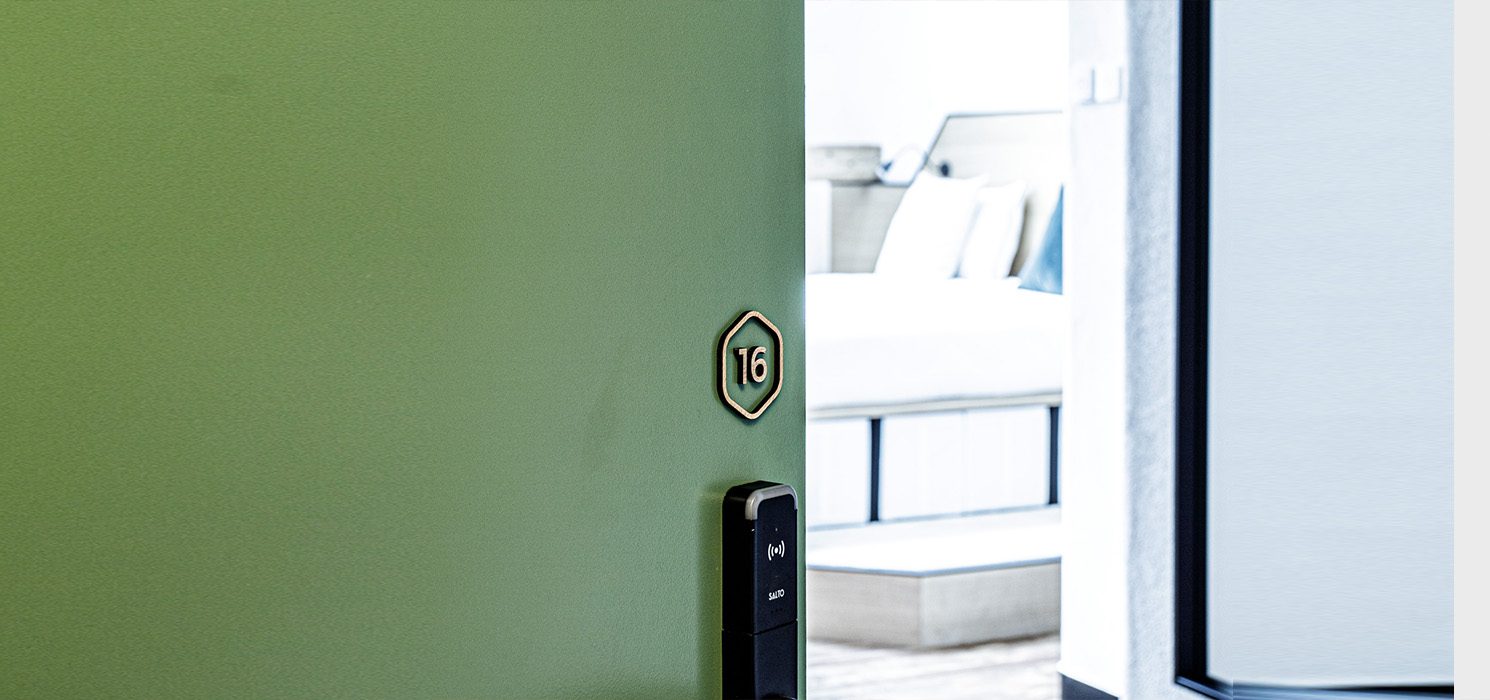
Trend #3: Rural Coliving
Remote work has opened up doors in a myriad of ways. If you can work from anywhere, why not work from somewhere that inspires you? For many, it’s fresh air and wide open spaces that bring out their best work.
Rural coliving is a trend that’s rapidly growing, especially across Europe. You’ll find coliving communities in sleepy seaside villages in Spain, in the mountains of Bulgaria, and across the German countryside. You can even colive and cowork from a 12th-century castle tucked within a forest in Normandy.
The options are endless. For many people, rural coliving offers the best of both worlds, swapping city commutes and lonely apartments for forest hikes and a strong community.
By 2028, it’s estimated that 73% of all teams will have remote workers. Studies show that 99% of people would choose to work remotely (at least part of the time) for the rest of their careers. With an increase in remote work, we see an increase in these types of rural communities as more people are able to leave the cities.
The most interesting thing to me about rural coliving is how well it demonstrates the power of community in coliving/coworking spaces.
Take one of Salto’s Community Partners, Coworking Bansko, for example, a rural coworking community based in the Pirin Mountains of Bulgaria. Thousands of digital nomads and expats go to Bansko every year. If you’re wondering where Bansko is, you’re not alone. A small mountain village in the middle of Bulgaria, located 2+ hours from the nearest airport, it’s not your typical tourist hotspot..
So, why do some of the world’s most well-travelled people flock to Bulgaria's tiny ski resort town? The answer is the community. With rural coliving, people don’t always come to a place for the destination itself; they come for the people they’ll meet when they get there.
Rural coliving communities are bringing people to regions that likely wouldn’t have been on their radar without them. In Europe especially, we’ll continue to see rural coliving grow and thrive into 2023. Technology is creating a world of new possibilities and bringing value to people’s lives in so many ways. Salto understands this and works with partners and clients to further support this more connected, tech-driven future.
Trend #4: Senior & Multi-Generational Coliving
One of the biggest shifts within the coliving industry in the coming years is in the demographic itself. Coliving isn’t just for millennials. There’s a place for coliving across the ages. (If you missed our article on Senior Coliving, you can catch up here)
Take a look at Priya Coliving, for example. One glance at their website and you can see that they do things differently than a traditional senior living space. With a welcoming, global community and an emphasis on experiences, it’s shared living for the modern senior.
Their community experiences go beyond what you’d expect. With mentorship exchanges, career coaching, and even an incubator program for continued growth, it’s the kind of place where members truly live an inspired life.
As we see more and more spaces raising the bar and offering these types of opportunities, we will see more popping up. There’s already a strong demand for a new take on senior living; the coliving industry just needs to catch up to meet it.
Check out the statistics, and you’ll easily see that senior-focused coliving is much-needed. More than 20% of the EU’s population is over 65, and it’s predicted that by 2100, 14% of the population will be over 80.
Apart from the need to find proper housing for this demographic, community living has extended health benefits, especially for seniors. Studies show that social isolation is associated with a 50% increased risk of dementia. Loneliness is associated with a 29% increase in heart disease and a 32% increased risk of stroke.
Community living keeps people healthier longer, which means many will begin to see it, not just as a housing solution but as a way to keep the older generation living independently for longer, avoiding the need for expensive long-term care facilities.
Beyond senior coliving, I also foresee an increase in multigenerational coliving projects. As the saying goes, ‘it takes a village’ to raise a child. But, for so long, modern families have been on their own. We see a desire to get back to the way things used to be when neighbors played a bigger role in our daily lives.
Coliving can make life easier for so many different demographics - single parents, families with young children, the elderly, students, entrepreneurs, and the list goes on. In the future, millennials won’t be the only demographic that comes to mind when we talk about coliving.
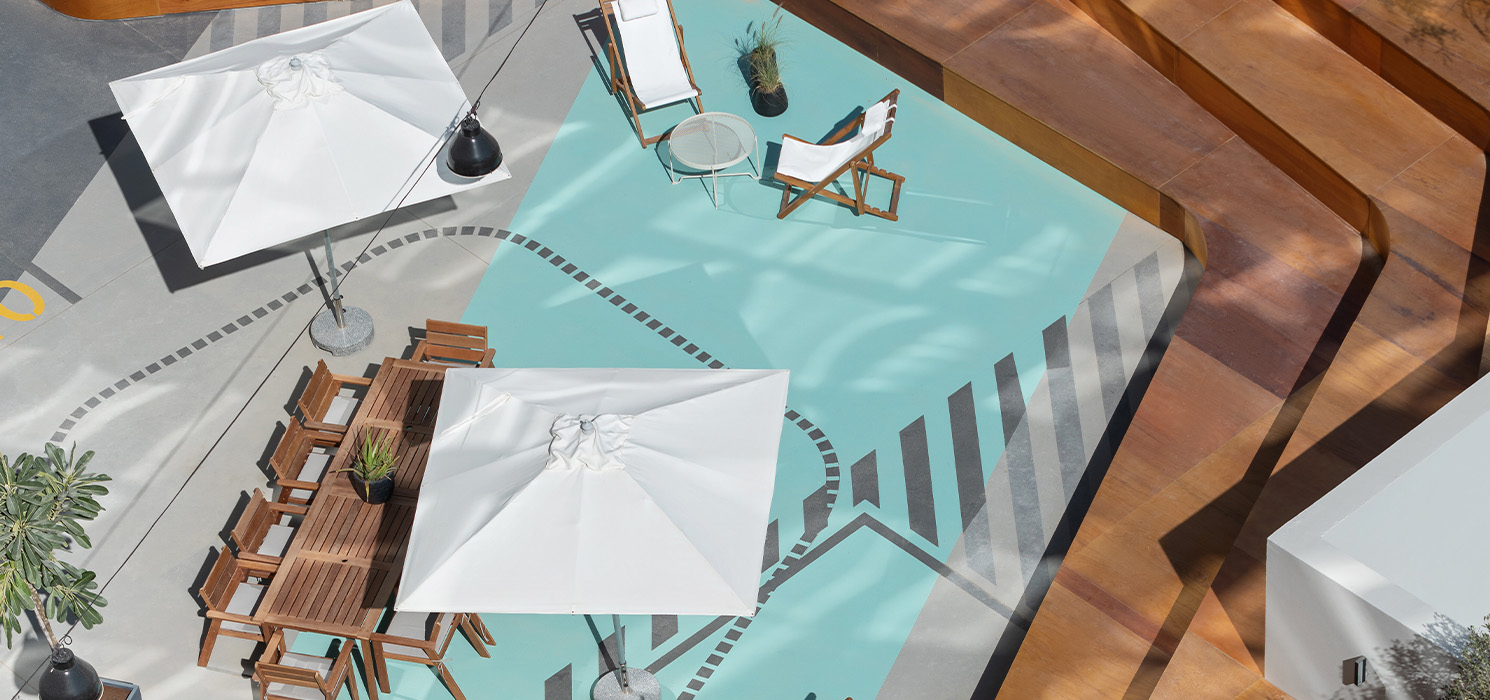
Trend #5: Tech In Coliving
When we talk about coliving, the first word that comes to mind is ‘community.’ The second? Convenience. Coliving makes life more convenient in every way; in many cases, it’s housing as a service. With a built-in community, furnished spaces, amenities, events, and local partnerships, coliving is the modern answer to communal living.
As coliving grows, proptech companies are looking for ways to enhance the Customer Experience. With many coliving spaces utilising community apps, keyless access control systems, and even housemate compatibility matching services, having a seamless tech experience in shared living is becoming increasingly important.
HIVE Coliving in Dubai utilises Salto’s access control to enable keyless entry for all of their private and communal spaces, offering enhanced security and peace of mind. With 120 units in their flagship property, having an access control system makes life easier for both users and the operations team. At Salto, coliving has seen such massive growth that the sector now has its own division of the company. The need for tech in coliving is growing across the board and is proven by the number of tech partners and integrations that Salto currently works with that focus on coliving.
Along with enhanced security and ease of access, operators are also looking to integrate additional value (and income) into their spaces through extra concierge services. Tech opens up limitless possibilities when it comes to providing a solid customer experience and enabling operators to scale their brands.
As coliving grows, we will see massive growth in coliving-focused prop-tech companies across the board.
Our next key trend is all about shared living for digital nomads, one of the most tech-savvy demographics out there…
Trend #6: Digital Nomad Coliving
With often no more than a laptop and a backpack, digital nomads hop around the globe, working remotely from some of the world’s most exotic destinations, which has given rise to a very specific sector of shared living.
With many digital nomads being solo travellers, it can be hard to find a sense of community while jet setting. Many nomads are successful entrepreneurs in their 30’s and 40’s. Airbnbs get lonely, and hostels often have too much of a party vibe for this particular demographic, which is why coliving has been such a perfect solution.
Digital Nomad coliving has long since been a staple across Asia (Bali in particular.) And, although the intense travel restrictions across the continent put many coliving spaces out of business, the digital nomad-focused spaces in Asia are beginning to see a resurgence.
In some cases, coliving spaces are popping up in what are already considered ‘nomad hot spots.’ Take Medellin in Colombia for example. Over the past several years, it’s become one of the top nomad destinations, and because of that, now we’re seeing a big increase in coliving spaces.
But, in other cases a region becomes a ‘nomad hot spot’ because there’s a coliving community. For example, the Digital Nomad Village in Madeira is an island that used to survive on tourism and had to reinvent itself during the pandemic, becoming one of Europe’s hottest digital nomad destinations. As mentioned above, community drives people to a region.
There’s so much opportunity when it comes to destinations that are outside of the typical tourist scope. We’re seeing a huge increase in the number of countries that are trying to draw in digital nomads. Because where the digital nomads go, tourists typically follow.
Digital nomads contribute approximately $787 billion a year to the global economy. Most earn their money from their home country and spend it locally, which makes them a particularly appealing demographic.
Nomads want coliving; governments want to attract nomads, which means leaders will be more supportive and open to such projects in the future.
On top of that, solo travel is on the rise in general. In the last two years, the number of Google searches around solo travel has quadrupled, forcing the entire travel and hospitality industry to think differently about its offerings.
This brings us to another key trend…
Trend #7: Hybrid Hospitality:
Hybrid Hospitality is a blend of the traditional hotel experience, along with elements of the coliving and coworking industries. Hybrid Hospitality is a concept that’s modernising the hotel world and creating an experience that goes beyond having a place to sleep and eat.
Business centres are being turned into coworking spaces, and hotel restaurants/bars are turned into community hubs. Instead of passing out brochures with the local tourist traps, hotels are serving as a launching spot to truly experience a neighborhood like a local.
This new version of what the hotel experience looks like caters to solo travellers, remote workers, business travellers, and more. It offers a more unique, community-driven, user-focused experience.
Hybrid Hospitality is the future of the hospitality industry and will continue to take cues from the coliving and coworking worlds.
So, where exactly is coliving headed in 2023? Everywhere.
In 2023, we’ll see more projects in varied locations, an expanded demographic, enhanced tech solutions, and niche-focused spaces, and we’ll see other industries utilising coliving principles.
Coliving brings people together, gives the world innovative solutions, and offers the support we all need to lead happier, healthier, and more connected lives. It’s modernising the entire housing industry.
There’s never been a more exciting time to be part of this industry. If you think community living is booming now, just wait to see what happens in the next few years. Coliving is our future.
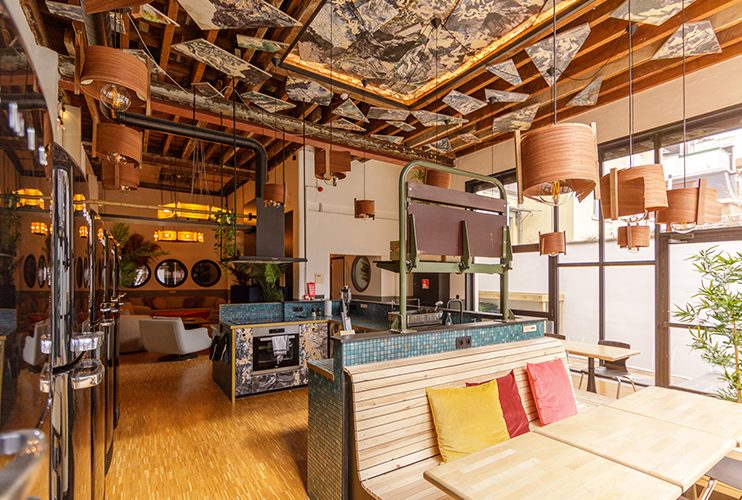
SALTO presents the Coliving awards Best User & Community Experience winner: Campus Perth
This year, the Coliving Awards were held in Katowice, Poland. The first of its kind, the ceremony highlighted the 'best of the best' in the coliving industry.
We partnered up with leading coliving consultant Leah Ziliak for a 6 part monthly blog post series. For this latest edition, Leah sat down with Pedro Mota, Director of Marketing at Campus Perth to chat about the key to achieving a truly unique community experience. Read ahead to find out why Campus Perth has the answers and how it is put into practice.
This year, the Coliving Awards were held in Katowice, Poland. The first of its kind, the ceremony highlighted the 'best of the best' in the coliving industry. While the coliving industry is still relatively new, events like the Coliving Awards are proof that the concept is rising to new heights. Coliving is more than a fleeting trend, it's a thriving real estate class, and it's here to stay. This is one of the reasons SALTO Systems served as a proud partner of the event, which celebrated the leading innovators across the shared living sector. SALTO is a big advocate of going beyond the product and making lives around the world easier with their hardware and software solutions. Coliving is a great industry to practice what they preach. With their solutions, SALTO enables communities by optimizing operations so the building and community manager(s) have more time to spend with their members instead of repetitive administrative tasks that can be automated.
As someone who's passionate about the coliving customer journey, there was one award category I was most excited to see on the ballot: Best User & Community Experience.
'User Experience' seems to be the trending topic in every industry these days, doesn't it? And, it's no wonder.
If you truly understand your user, not only can you create a superior product or service, but you’re able to build lifelong fans of your brand. A great UX/CX is important to every customer-centric business, but it’s critical when it comes to coliving.
Why is that?
Well, to start, a strong focus on the user/community experience is a big part of what defines coliving, and sets it apart from traditional rental experiences to begin with.
With a traditional rental model, the customer journey has always been quite basic (and quite lacking, to be honest.)
Find a place. Sign a contract. Pay a deposit. Hope you get along with your housemates. Never speak to your landlord again unless there's a problem. Move out.
With coliving, the experience is much more immersive and tailored to the user. For successful coliving brands, it’s about more than simply keeping customers happy, it’s about building a mini-ecosystem of connected community members. And that is something altogether different. It’s one thing to give your members a pretty place to live, it’s another thing to create an experience that enables them to thrive.
There’s intention (and a bit of magic) built into the coliving customer experience that goes well beyond move-in day. The ‘sale’ is just the beginning of the journey.
The Coliving Awards celebrated those who are putting thought into the details and are creating unique experiences for their members. SALTO Systems served as an Exclusive Category Sponsor of the User & Community Experience award.
And, after much deliberation, the winner was…
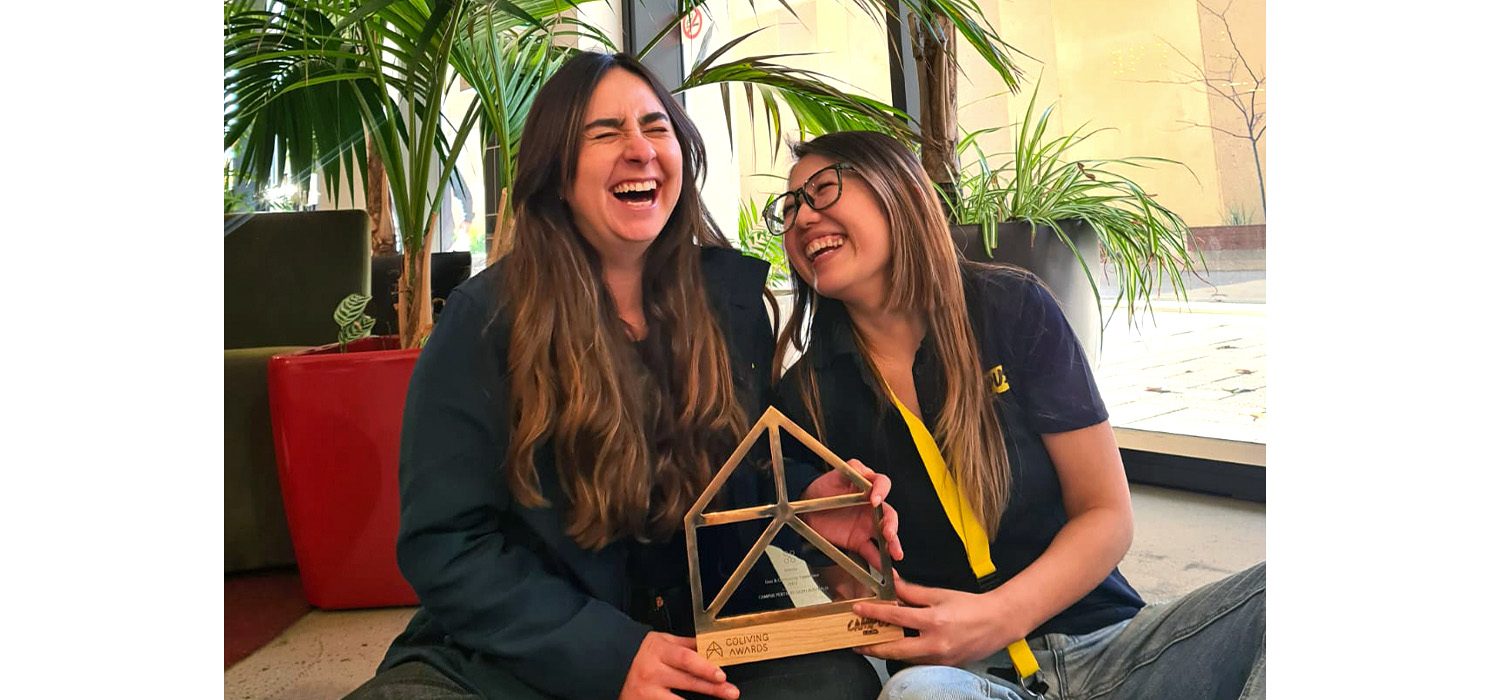
Located in Perth, Australia, Campus Perth is making waves in the student housing sector. With stylish rooms, a rooftop lounge and community events, it's the kind of place you wish existed when you were in college. And, with 24/7 CCTV, dedicated security team, live-in residential advisors and on-call doctors, it's the kind of place parents are happy to see their kids living.
The space itself is a student’s dream. With 726 beds, members can choose between four different room types to suit their needs. It also features 3,600 square metres of social areas, including a fitness studio, a coworking library, gaming areas, a communal kitchen, pool tables, and more.
Community events are held on a regular basis and range from film screenings and cooking classes to resume writing sessions and weekend trips. Campus Perth is designed to be a place for students to not only be productive, but to stay connected along the way.
I sat down with Pedro Mota, Director of Marketing at Campus Perth to chat about their recent win at the Coliving Awards, and learn more about the magic behind Campus Perth.ç
Winning the ‘User & Community Experience’ award is such a massive achievement. What do you think makes the User Experience at Campus Perth so unique?
We like to say that we provide more than just a bedroom to our guests. From the moment our residents walk inside of our building, we’re there for them no matter what. Campus Perth wants to become a remarkable part of our residents’ lives. I believe the best service we provide is facilitating connections within our community.
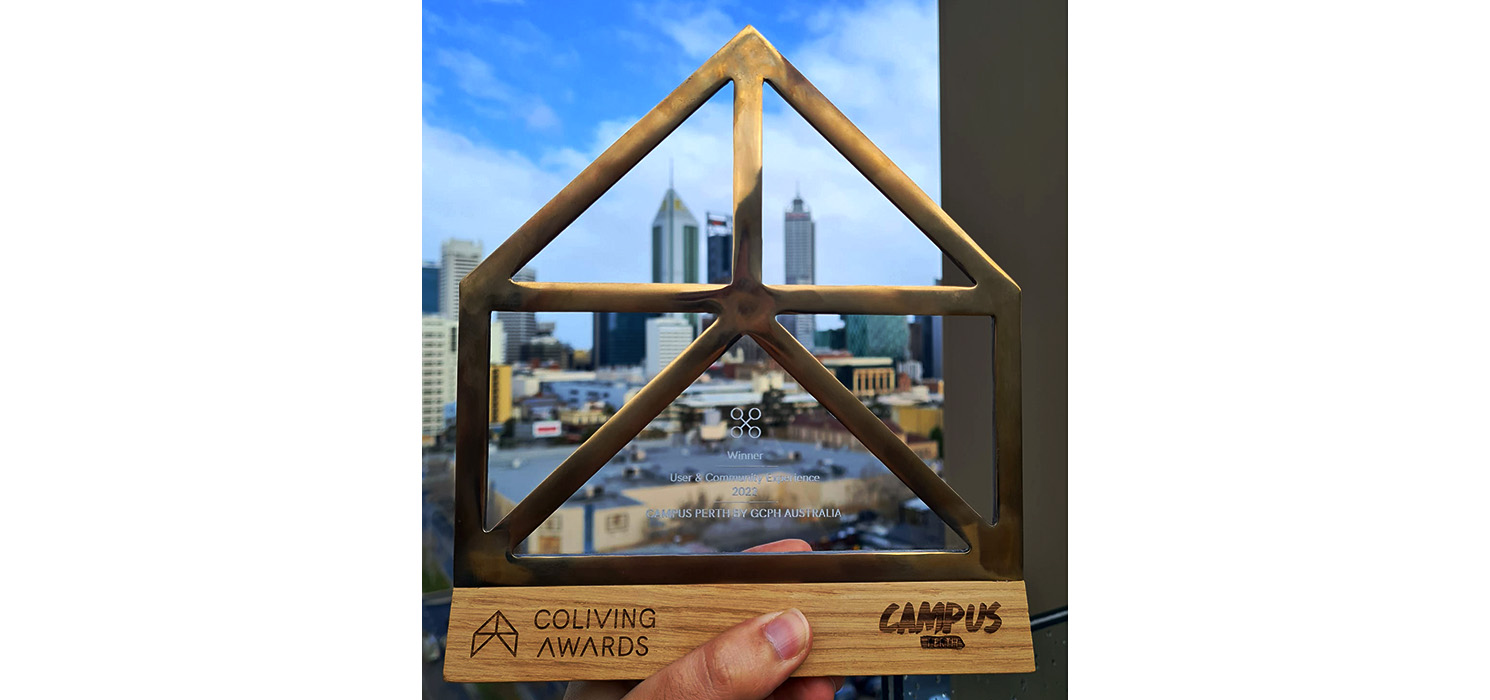
What does a typical 'First Day' look like for a new member?
All of our residents receive a ‘Welcome Pack,’ no matter what time or day of the week they arrive. These welcome packages will contain the basics of information about the city, the daily routine at Campus Perth, snacks, and how to download our internal app. It’s almost a survival kit. Within 24 hours, one of the Resident Advisors will reach out to the new arrivals and provide them with further information about our building, events, and operations in general. They will also offer some support and potentially introduce residents with similar interests.
What events or experiences at Campus Perth do members enjoy the most?
In four years of operations, I can say that we tried a bit of everything in terms of events. We’ve developed good partnerships around the city that offer discounts on activities like bowling, go-karting, indoor rock climbing, basketball, etc. We also run quiz nights, escape rooms, and amazing races inside our building, all organised by our team.
However, the yoga and cooking classes are definitely the special ones. They have been taking place since our first month of operations, and the attendance numbers have been great since then. Yoga classes take place once a week in our gym studio, and the cooking classes are once a month in our communal kitchen, which fit up to 40 people.
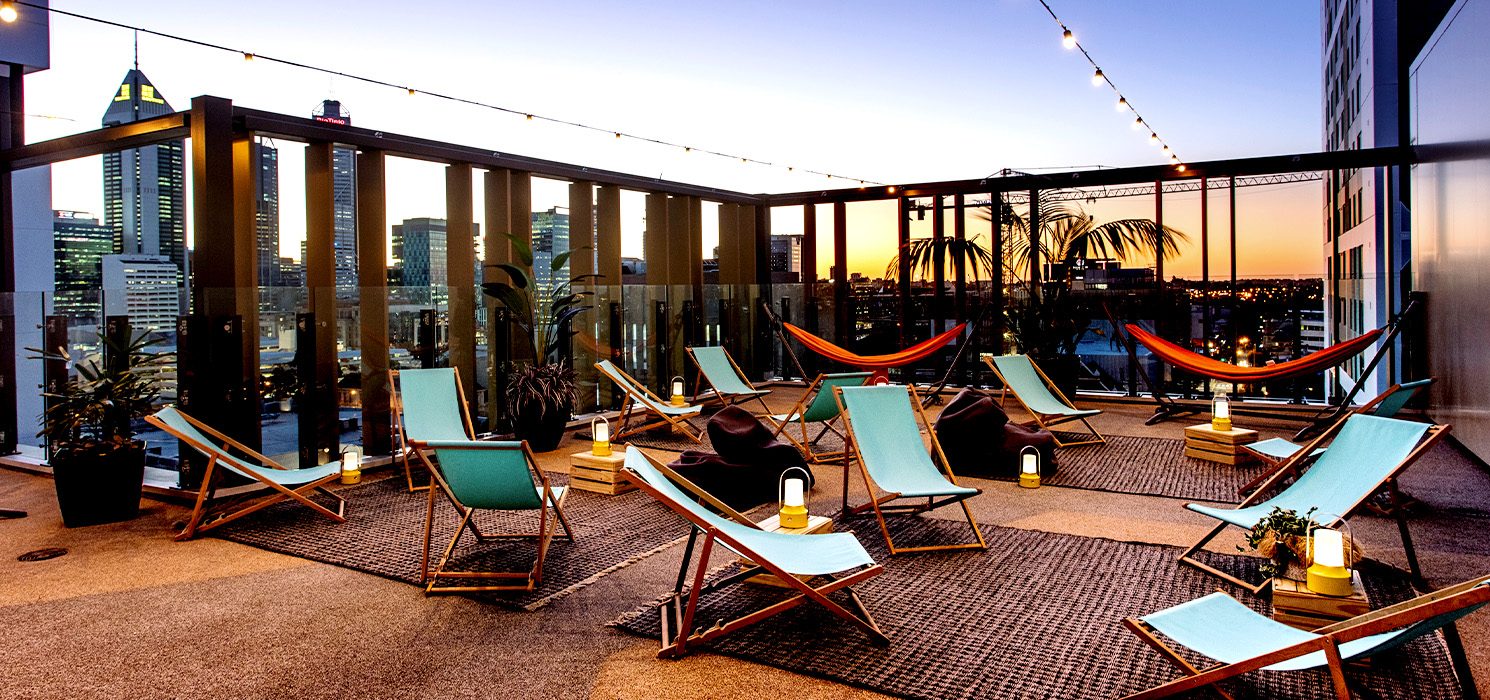
How does tech play a role in the User Experience at Campus Perth?
We try to make our residents' connection and communication as quick and straightforward as possible. The development of the Amigos app, which is the Campus Perth app, became a vital factor in this integration. Our residents can access all internal communication, events, reception hours and talk directly with our team.
For example, through the app, they can speak about something that's not working with our maintenance team, raise a question to one of our Resident Advisors or discuss their payments with the front desk. On top of that, we also have a building covered in projectors, video games, TVs and more, all integrated and controlled from your phone or computer.
You seem to have a lot of international students who choose Campus Perth. When it comes to onboarding, does your User Experience differ for international students vs local students?
Luckily, we have a very international team. It’s easy for us to understand different cultures, languages and backgrounds. Our local students might have parents who visit on the weekends, they already have friends in the city, so it’s a bit easier.
But, when you talk about international students, many of them are away from their families for the first time. They’re looking to make new friends, they’re attending more events. But, it really depends on the person. We have to adapt and change and see what’s needed.
When I first moved to Australia, I was an international student, and I had to experience all of the traumas that go along with that. And sometimes you definitely need a hand to succeed and to get somewhere. And I missed that hand a few times. So, I try to do as much as I can in terms of like, ‘Okay, you’re not alone. Let’s do this together. I’ve been in your place. It’s a bright future ahead, so let’s go.’
It’s not just about giving someone a room, and saying ‘good luck’, it’s about following up, making them understand that we’re here for them.
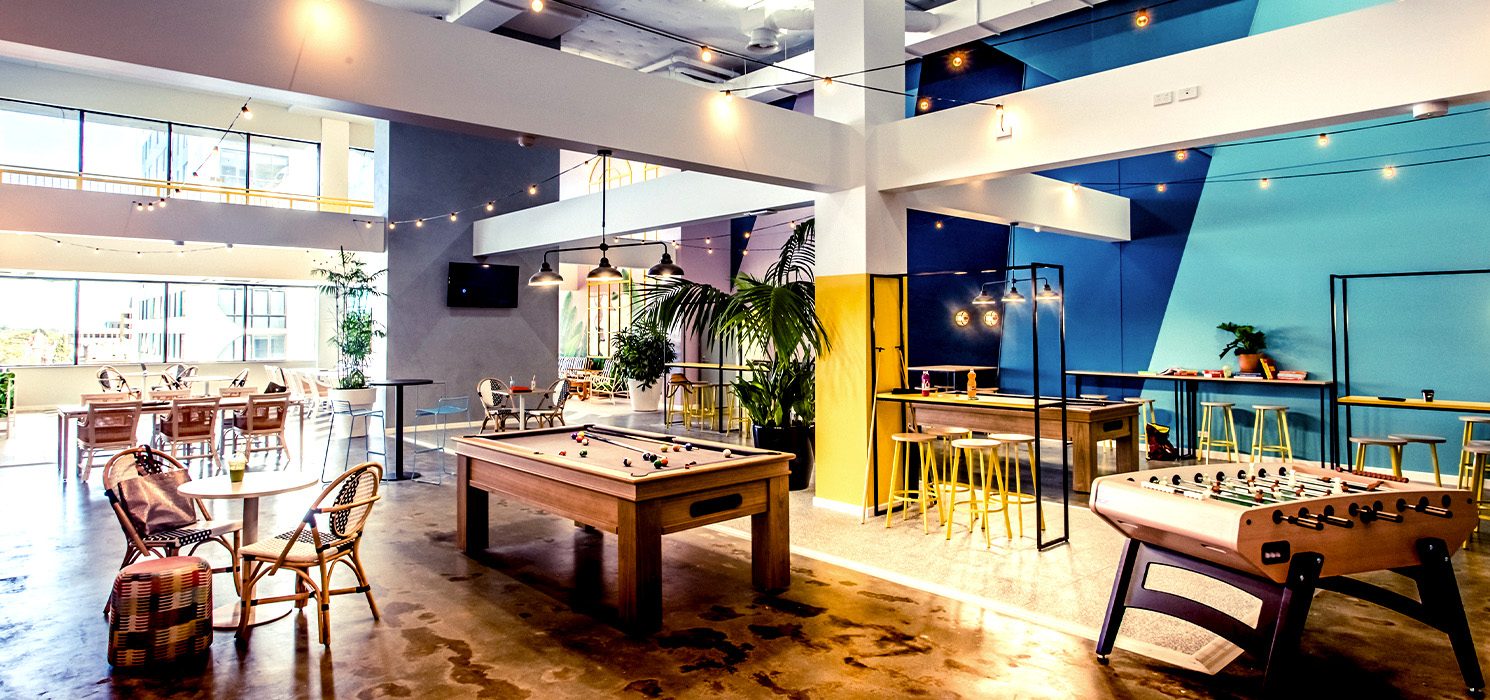
In conclusion, it’s easy to see that Campus Perth is doing something incredibly special within their community. (And, the waitlist on their site suggests that the demand is certainly there for this type of elevated student accommodation.)
Innovative shared living brands like Campus Perth are raising the bar for what a coliving experience can look like. And, in doing so, they are raising customer expectations. As the industry continues to grow, those who have a thoughtful, connected UX/CX will continue to thrive, and those who don’t will be left behind.
The future of shared living is in the hands of those who want to create a modern, connected, wellness-driven experience and provide a more social way of living. And, if you ask me, the future of coliving is looking bright.
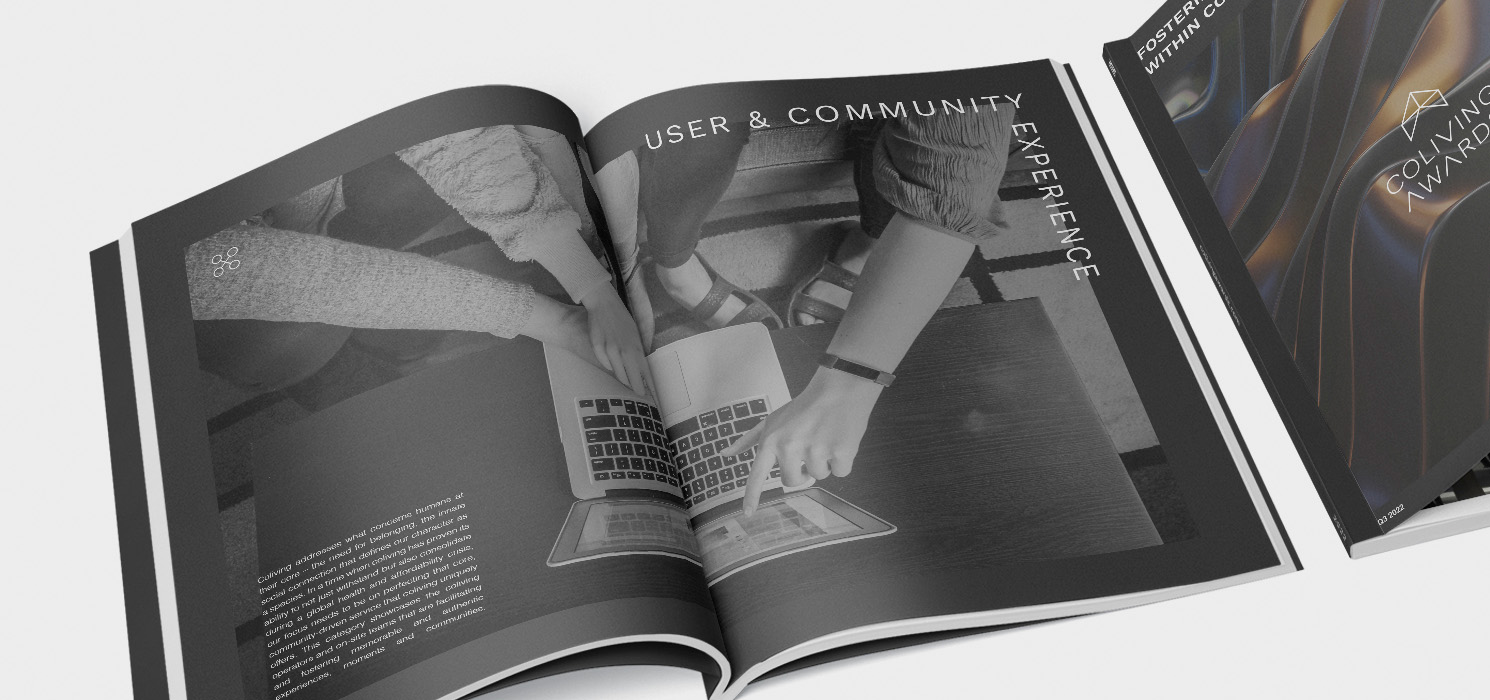
The Coliving Awards recognized innovators across the coliving industry in 15 different categories including interior design, proptech, branding, content/media and more. To see a full list, and many more info of winners and finalists, download the latest version of Coliving Insights.
Keep an eye out for the fifth of our Coliving Series which will focus on coliving adapted for later life, the need for more senior coliving projects and how to modernise/normalise shared living as we age.
For more information on how you can offer your residents a seamless customer experience, contact our team of experts here.
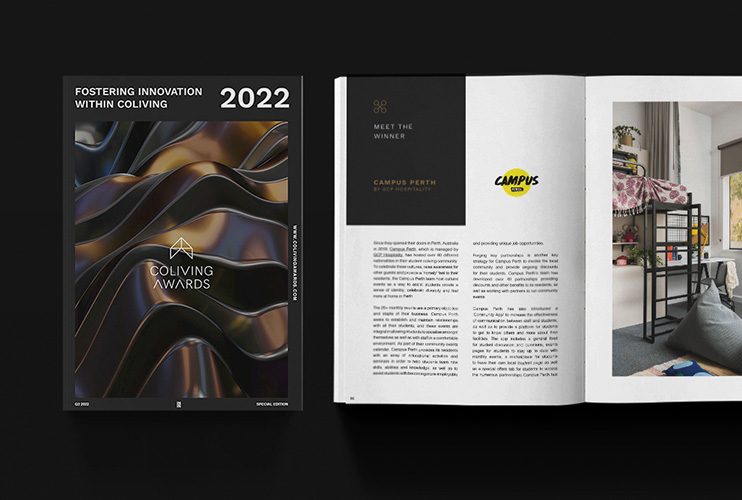
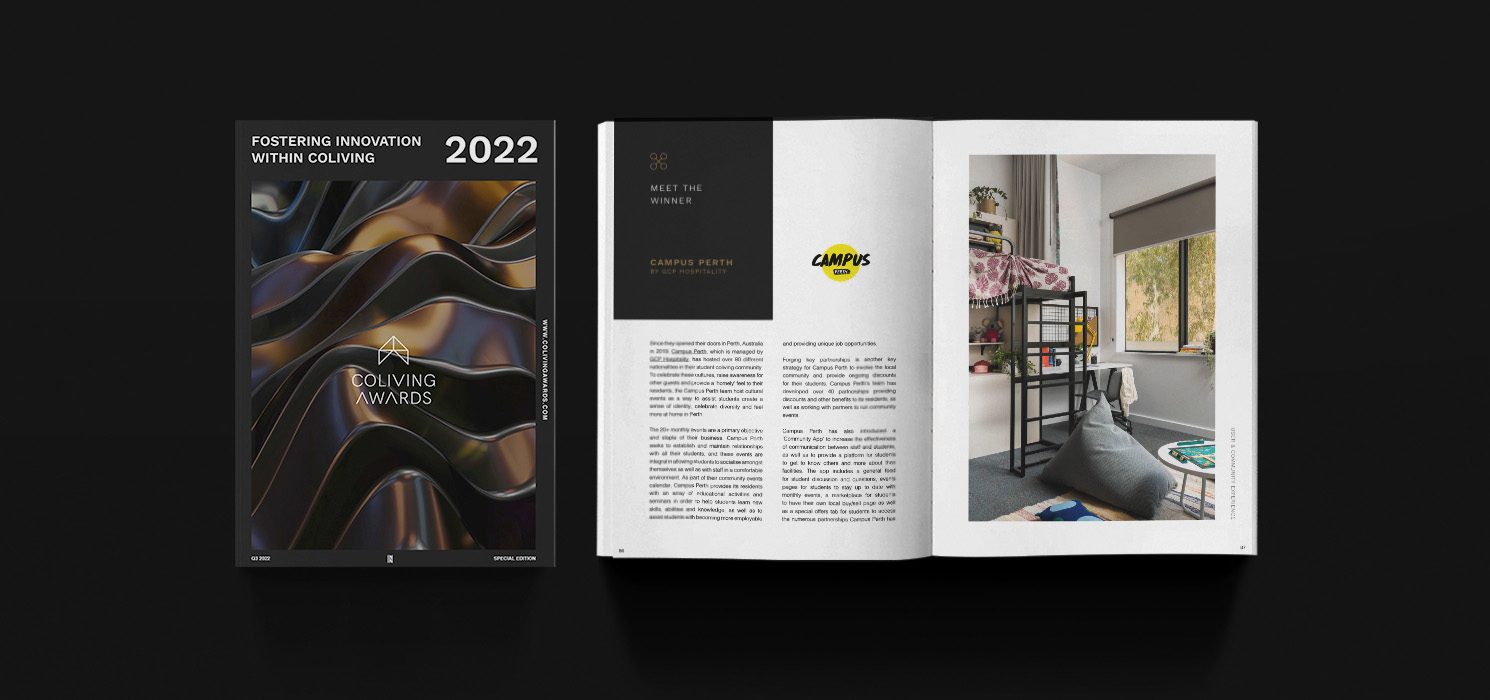
Community is the key for SALTO and Coworking Bansko
SALTO proudly introduces a partnership with Coworking Bansko, one of Europe’s largest digital nomad hubs based in the mountainous town of Bansko in Bulgaria.
SALTO proudly introduces a partnership with Coworking Bansko, one of Europe’s largest digital nomad hubs based in the mountainous town of Bansko in Bulgaria. Coworking Bansko integrates SALTO technology across their locations for smooth and seamless user experiences. With a strong community of over 125 members on average, Coworking Bansko is people-first. That’s why, each year, they bring together a global community of 500+ digital nomads, location-independent, freelancers, and entrepreneurs at Bansko Nomad Fest.
Since you opened the very first location 6 years ago, Coworking Bansko has developed, changed, and grown. Tell us more about the different spaces at Coworking Bansko, and your ethos.
Our community is built on freedom and happiness and is guided by the five core values of coworking: community, openness, collaboration, sustainability, and accessibility.
We provide the infrastructure so that our members can become the very best version of themselves. Different people have different needs and work habits; we aim to support them with our different environments. So for deep work, our members can head to the Gondola or the Quiet Space, our main community hub with a large garden that’s home to the famous Friday potluck gathering, where all community members contribute to food and drink and come together to celebrate and enjoy the community. Or, if they want to work and casually socialise in more laid back areas, they can do so in the calming Social Space. We also have the Lounge, a space that recreates a coffee shop with a blend of music, work, and chat, and a great rooftop with a work and chill area.
In which Coworking Bansko locations have you installed SALTO technology?
We’ve installed SALTO technology in all our four locations in Bansko, including an off-the-grid forest location on the doorstep of Bansko National Park that we call the Playground. It’s a place where we host lots of community events and where we’re building our wood cabin.
We’ve integrated SALTO technology across standard use cases, like the main entrance doors, but also at more experiential spaces, like all our meeting rooms and our wood cabin, to better manage access and usage. We’ve also integrated SALTO technology at a separate storage site for external contractors who help with events or other projects to access our locations. They can easily come in and out without our team needing to be around. As it’s so secure, it helps us to continue creating safe experiences for our community.
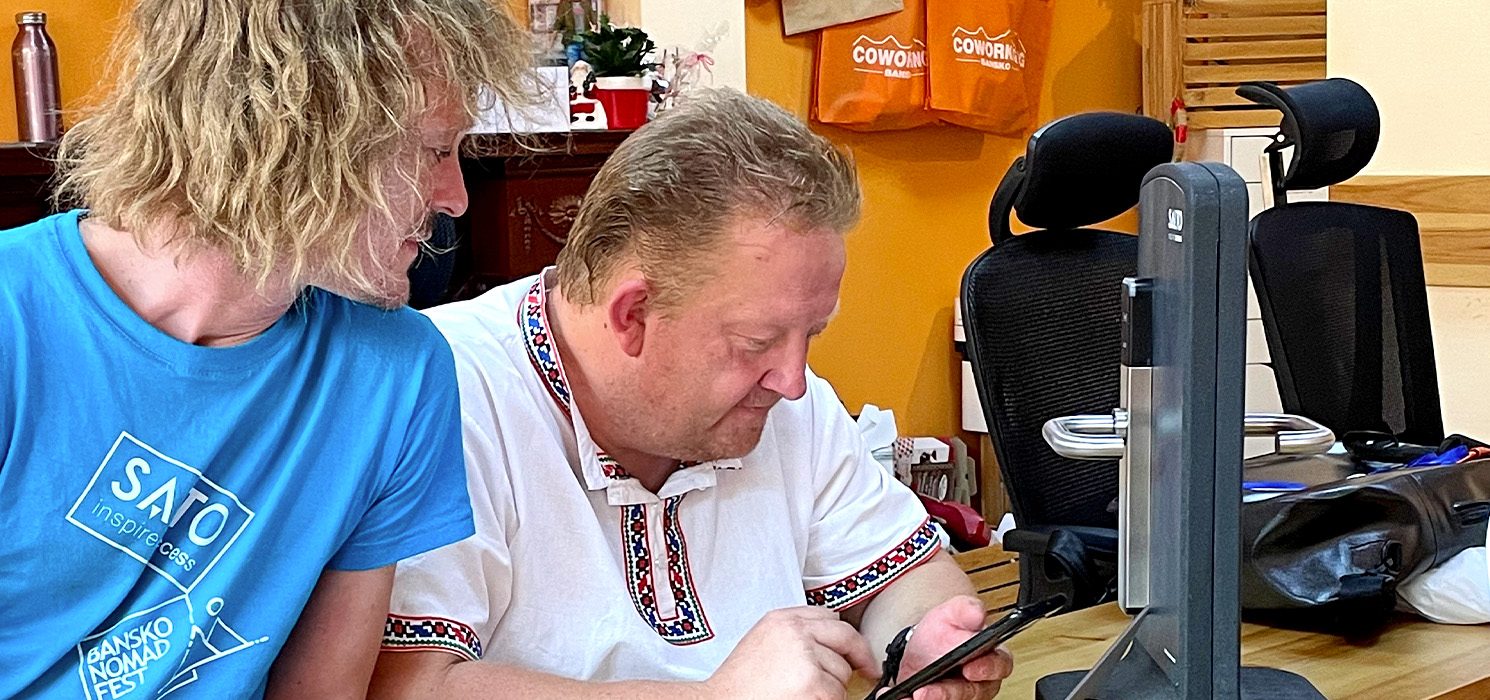
What impact has equipping your spaces with SALTO technology hadmade in your business and community?
Before we began using a smart lock system, we were using physical tokens that generally worked well although there were issues with the system’s stability. It was a homegrown DIY solution which didn’t work when we experienced power or internet outages, plus there were hardware issues during cold winters. Using only physical tokens held us back. When people arrived outside normal office hours to pick up or return tokens, it created a lot of work for several people, including our team, trial members, and day pass users. We also didn’t have the token system on all our doors, so our teams still had to use physical keys alongside them, which was inconvenient.
We’ve now installed 19 SALTO locks and 5 IQs on our doors, and plan to add a few more wall readers, locker locks, and padlocks in different locations for different uses.
Our users love the new system. Being able to open all doors with the SALTO KS app means that they no longer need to pick up and return any hardware tokens, making operations and welcoming new trial day members much easier. Also, the look and feel of SALTO locks helps us to create the best community experience possible when new people open our doors for the first time.
How did you meet Cate and Christian at SALTO Systems?
I was surprised when Cate and Christian approached us to partner at Bansko Nomad Fest 2021 (we met through a mutual connection). Initially, I didn’t understand why they wanted to come to a digital nomad festival because we’re not an industry trade show. But it soon became clear to me that Cate and Christian are visionaries. They have a passion for community and togetherness, with‘community is the key’ at the heart of it all. They wanted to explore the future of access management for coworking and coliving, and that was the perfect fit for us.
Christian ended up staying with the community, overnight, despite having to fly home early the next morning, I realised that he is someone who we had to work with. Cate stayed longer in Bansko after her first Nomad Fest to engage with our community, organise some photoshoots with our 40-year-old orange Lada jeep and brainstorm many ideas. During that time, she became part of our community. We loved seeing her again this year and look forward to her every visit.
Why do you also believe that community is the key?
Our members join Coworking Bansko to make connections for their business, social life and to enjoy Bansko together. In an era of remote working, nobody really needs to work at a traditional office anymore. But, everyone needs connections to thrive and become the best version of themselves. Our community is not limited to our members. Coworking Bansko is part of several communities who’ve helped us grow from grassroots as a rural coworking location, to one that is now a globally recognised ecosystem and nomad capital. Community is the key that unlocks our peoples’ happiness. That’s how I view my community.
How will SALTO technology continue to support Coworking Bansko now and in the future?
I believe that SALTO KS cloud-based access management and SALTO industrial leading hardware, in combination with a very responsive support team and dedicated partner organisation, is a great basis to integrate with our strategy and operations.
Coworking Bansko is constantly growing. We successfully crowdfunded a “crypto cabin” via an NFT using Web3 authentication, which gives owners access to the cabin at different times. We’re also building a sauna at the Playground, as part of our efforts to boost our community’s well being. To streamline the whole operation, all these locations will have SALTO locks which are accessible using the SALTO KS app that our members already use.
A lot of our members use bicycles that often break down on the rough roads around town. So, we’re building a bicycle repair station outside one of our locations, with access to the tool box and air compressor via SALTO Padlock. We also plan to use SALTO locker locks to facilitate car key access to our orange flotilla of rental cars.
It’s been fantastic to receive the support of SALTO and the Community and Partnership team, particularly over the last couple of years when Cate and Christian joined us at both the Nomad Fest and the CUBB (coliving unconference). We look forward to our continued partnership and collaboration with SALTO at community-oriented events like these as well as events outside Bulgaria.
What’s next for Coworking Bansko?
Our next big exciting project will move us into the coliving space. “Coliving Bansko” will be a purpose-built coliving space co-owned with our community. Unfortunately, supply chain issues and high energy costs are slowing down construction, but this project is at the top of our list, and we hope to start building it in early 2023.
We’ve recently announced our Nomad Festival 2023 edition. I feel that it will attract even more attendees next year (this year it was around 550). We’ll most likely host the second edition of the coliving conference (CUBB) in April 2023, and I’m pretty confident there will be more surprises from Coworking Bansko and our community to come.
We look forward to witnessing Coworking Bansko’s continuous evolution and its growing use of SALTO technology. And we’re looking forward to partnering with them again at their upcoming coworking and coliving events because community is, indeed, the key!
Want to find out more about our partners in coworking or other industries? Take a look at our industry pages and follow us on LinkedIn for updates!
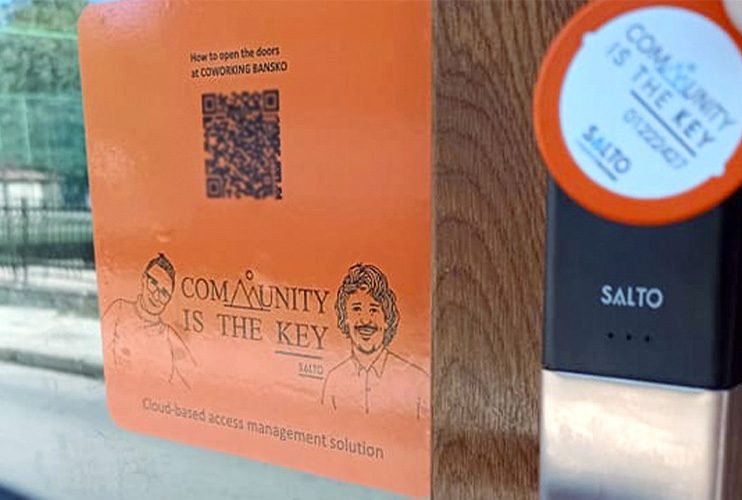
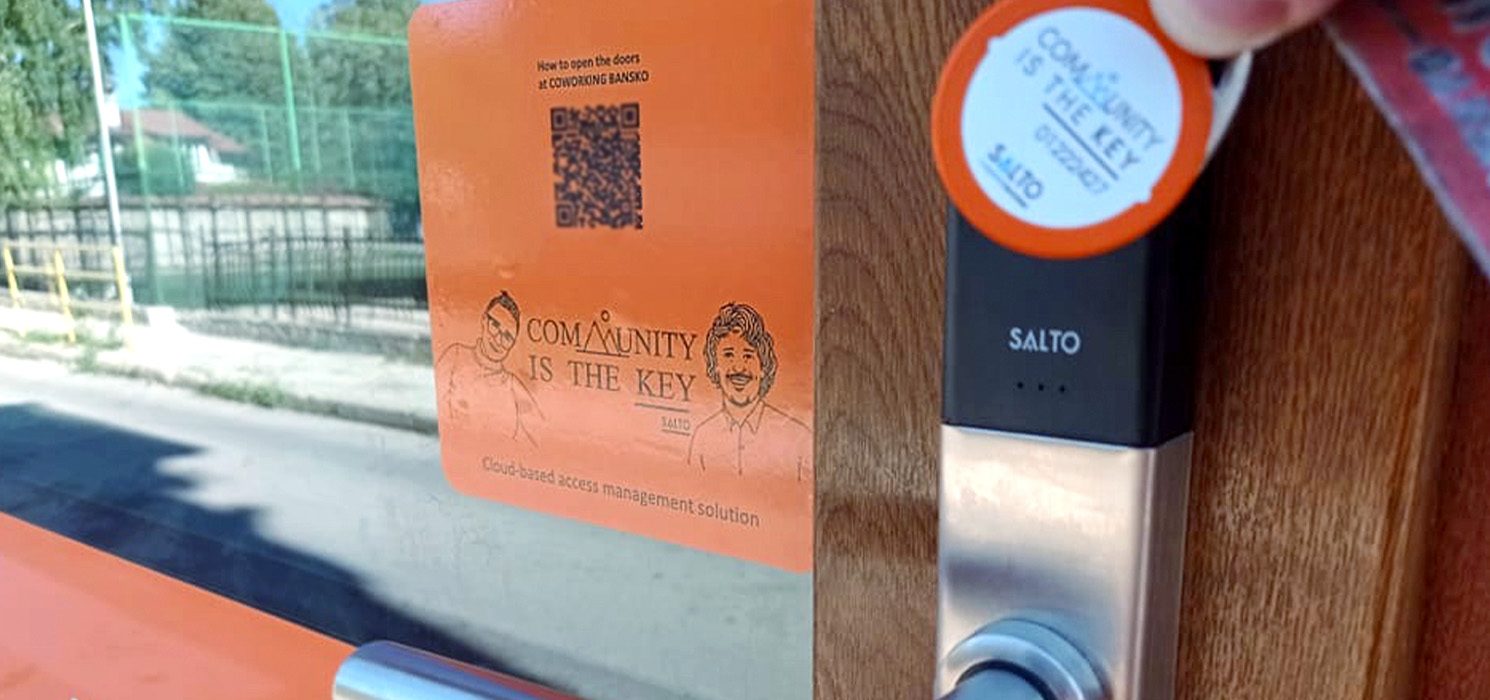
Make the most of your coliving space with SALTO and res:harmonics
We’re proud to present res:harmonics as one of our core technology partners.
We’re proud to present res:harmonics as one of our core technology partners. res:harmonics property management system is an all-in-one platform that delivers the essential tools for coliving and serviced apartment operators to maximise profit, provide high performance operations at reduced costs and deliver great customer service. Headquartered in the UK, res:harmonics has doubled the number of units managed year-on-year since 2016, and is now integrated in over 10,000 units across Europe, North America, South America and Asia.
SALTO’s innovative access control solutions are integrated with res:harmonics PMS to deliver frictionless guest experience, streamline bespoke operations and generate additional revenue for coliving operators.
Effective coliving software
Property management systems (PMS) are essential tools for the residential hospitality industry, eliminating the need to use different software platforms to manage operations. From boosting sales to optimising operations, res:harmonics PMS transforms operator productivity by as much as 40%, and generates more revenue by automating activities across the customer journey to improve guest experience at every touchpoint, which increases repeat custom.
“res:harmonics property management software was specifically designed for coliving operators to seamlessly manage the complexities of coliving operations. Our integration with SALTO makes coliving management even easier by removing physical and operational barriers to access control.”

Giles Horwitch-Smith, CEO and Founder at res:harmonics
Safe spaces and smooth operations. The concept of coliving is based on community, openness, and social interaction between residents, which presents an array of unique challenges when it comes to security. As coliving operators welcome new residents and visitors on a daily basis, managers struggle to track physical keys and change residents' access, as well as finding a balance that maintains resident security and their belongings, whilst cultivating an open community.
With SALTO and res:harmonics integrated a data-cke-saved-technology, coliving operators no longer have to compromise. Operators can remotely provide resident access to communal spaces, like gyms or swimming pools, limit access to private rooms, and change access to spaces throughout the day (i.e. for organised events in private meeting spaces). Operators also provide maintenance staff with temporary access to lift restrictions during emergencies.
For example, leading coliving operator, The Collective, uses res:harmonics coliving software and SALTO Systems to facilitate seamless community access to communal areas, control access to external events in its properties and provide exceptional security to private spaces.
Whether you have 30 access points or 3000, there’s no need to hire onsite staff, call a locksmith or battle to find keys for maintenance tasks when using SALTO Systems and res:harmonics. The access control solution also fully integrates with existing management tools to provide real-time occupancy, demographic and amenities data for effective space monitoring.
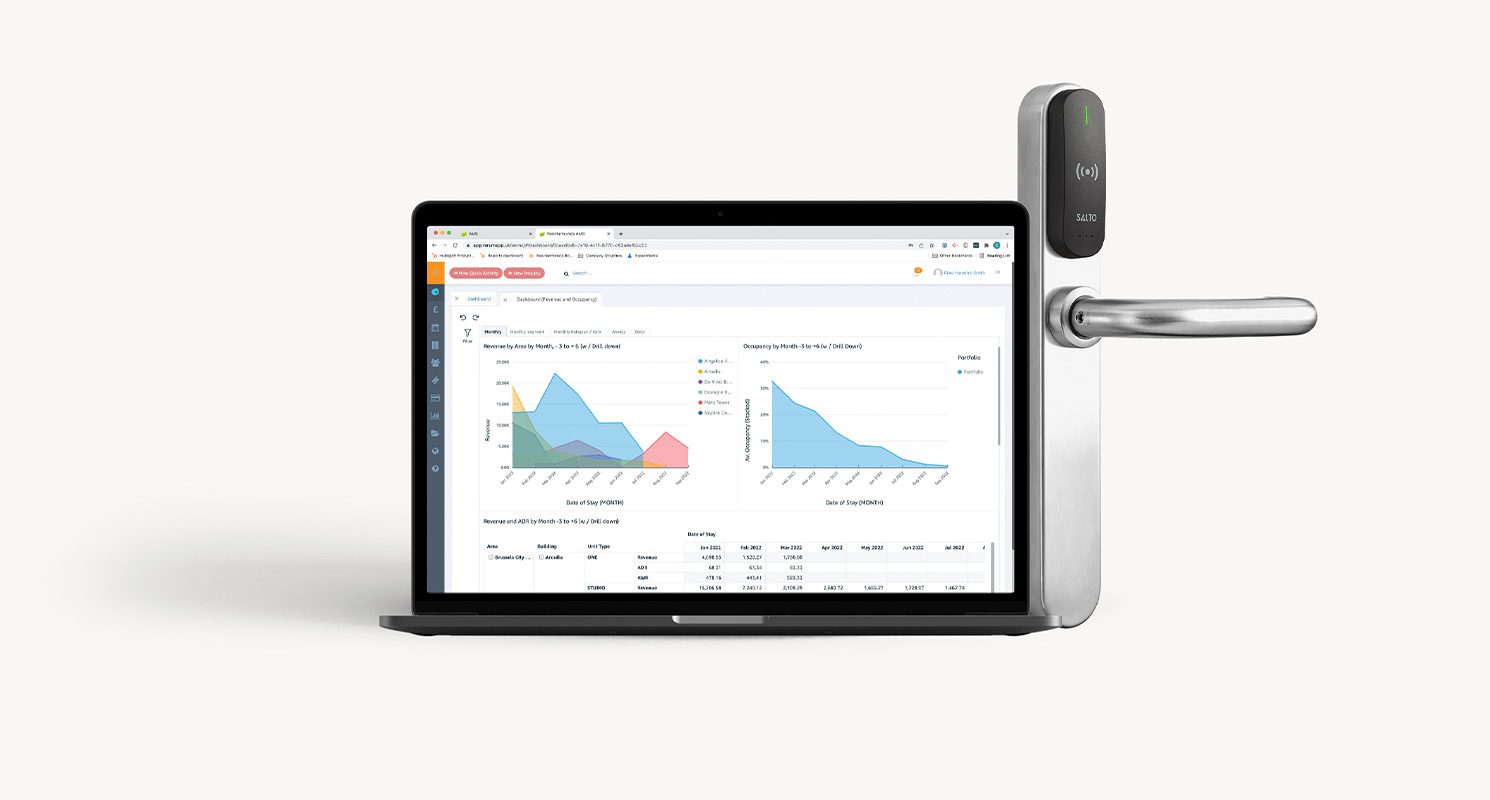
Finnish coliving concept Noli Studios has a wide variety of resident demographics and lengths of stay in their properties at any given period, ranging from students staying for a year to short-term tourists. With SALTO and res:harmonics, Noli tracks comings and goings, and easily switches access control as residents return and depart.
“Community is the key”
It’s critical that coliving residents receive amazing user experiences. res:harmonics recently introduced a guest app that’s specifically designed for coliving operations, that facilitates communication between operators and guests for booking community events, reporting maintenance issues in real-time and paying bills. What’s more, the white-labelled guest app allows customisation and branding specifications. This feature also integrates SALTO keyless access to unlock doors at coliving properties.
Integrating SALTO solutions within res:harmonics operations builds thriving coliving communities. By assigning credentials to an app or tag (key fob), residents simply tap in and out of specific areas, such as the garage or gym, and manage access to their own private space through guest invitation.
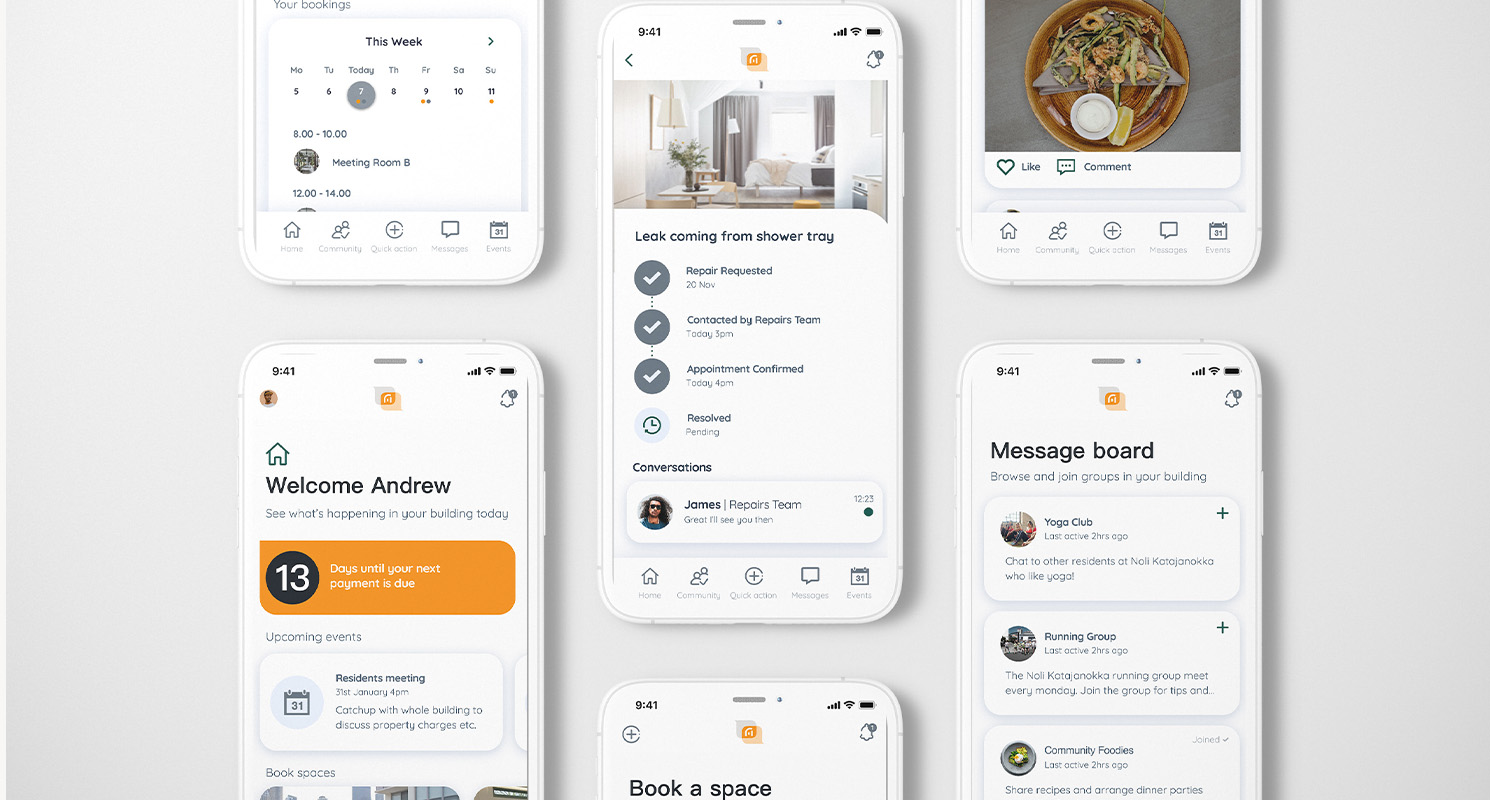
Meanwhile, operators and residents can also organise community-enhancing events, such as a pilates class on the roof terrace or a cookery class in the kitchen. For example, Weave Living uses res:harmonics coliving PMS and SALTO System to enhance community events organised for its residents in Hong Kong.
As the community changes, administrators can change permissions and easily add new properties as required, without compromising security or movement.
Curious about res:harmonics innovative living software? Find out more here.
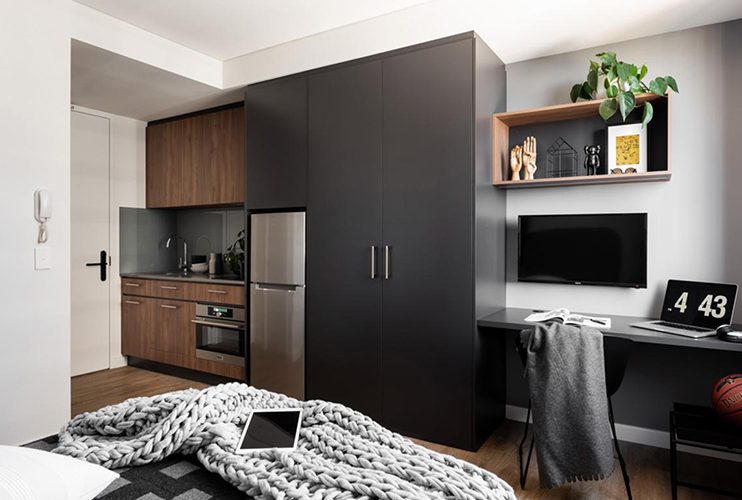
The Benefits of Coliving: A SALTO Partner Spotlight
In the third instalment of our 6-part Coliving Blog Series, we dive into the ingredients that make up a successful and modern coliving experience.
We've partnered up with one of the best guest experience coliving consultants to launch a 6 part monthly blog post series. In the third instalment of our 6-part Coliving Blog Series, we dive into the ingredients that make up a successful and modern coliving experience. Our expert coliving consultant and Community Experience Specialist Leah Ziliak shares her recipe below!
Imagine this: You've just arrived in a new city. You've found yourself on your own, with a fresh start, and so many possibilities. Sounds exciting, right? While the thrill of exploring a new place might keep you busy for a while, in the end, you spend most of your days alone in your apartment, working from your home office. You quickly find yourself caught in the usual routine: work, eat, TV, sleep and repeat.
Not exactly the dream life abroad you pictured in your mind. Sure, it would be nice to go out and meet people after work, and to feel more engaged with your new neighbourhood, but where do you even begin?
The truth is, making friends as an adult is hard. It's intimidating, time-consuming and requires a great deal of energy. Even if you manage to connect with someone at the gym or a meetup event, it can take months or even years to form a solid friend base in a new place.
Why anybody would choose coliving?
So, what's the alternative? Let me give you a concrete example:
Well, imagine this: You've just arrived in Dubai, but instead of relying on traditional booking systems to find accommodation, you've chosen to live at HIVE Coliv, a brand new coliving community in the heart of the city. You drop your things off at your fully-furnished, private apartment, and the in-house community facilitator gives you a tour of the space.
The dedicated coworking space is buzzing with activity, and you notice others opting to work from cozy couches throughout the building. A group of people are chatting at the rooftop pool and are about to start up the BBQ. There's an open mic night that evening, and another resident, that you’ve only just met, insists you come along.
At the end of the day, you find yourself laughing with new friends and making plans for the weekend. You've been here less than 24 hours and you've found more than just a place to live, you've found your people, you've found a sense of belonging, you've found a home.
That’s the impact that a shared living experience can have on a person.
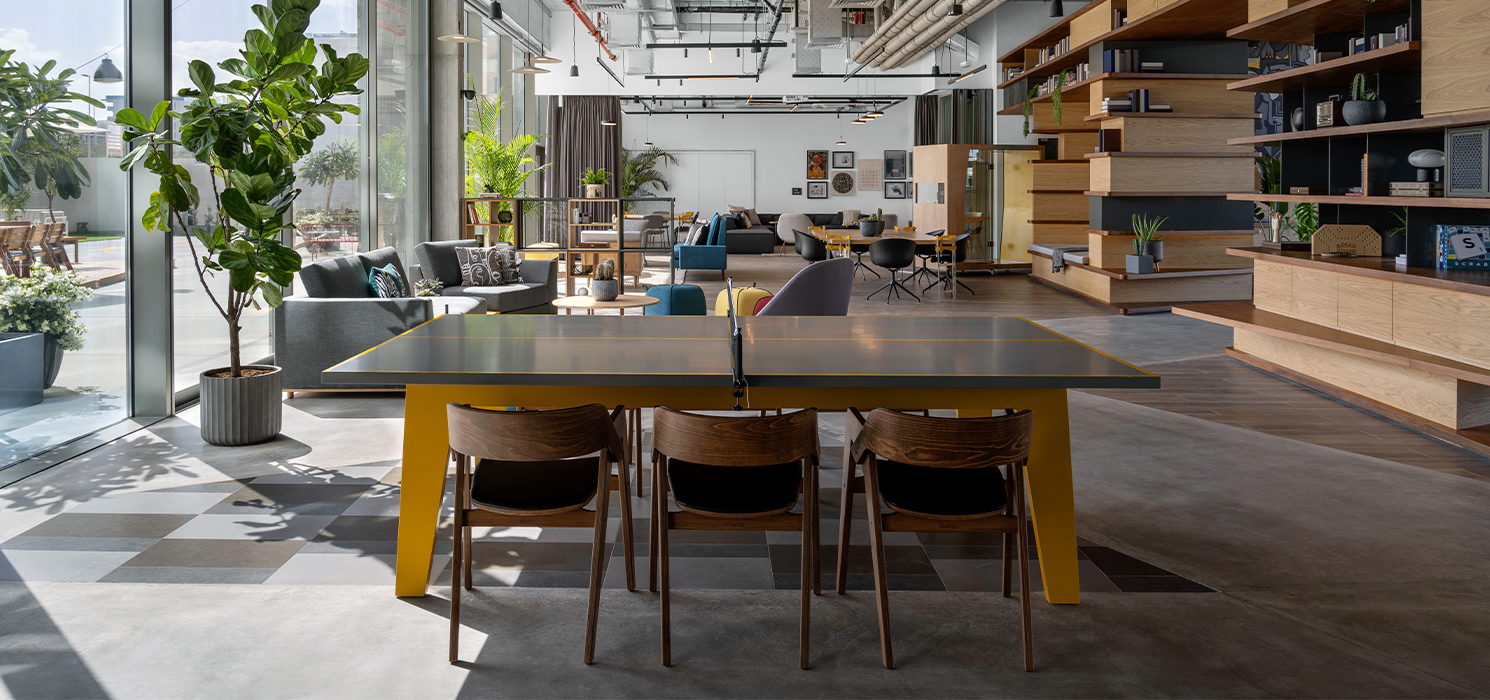
SALTO client, HIVE is a perfect example of what modern shared living can look like. Creating not only gorgeous living spaces for its residents, but engaging, dynamic spaces that connect. With a focus on wellness, sustainability, convenience, flexibility and connection, HIVE is one of the operators in the coliving industry who are changing the way people live and work.
For years, apartment living meant sharing walls with neighbours you hardly ever saw. But, forward-thinking companies see the value in creating something much more impactful. Providing opportunities for social connection and personal growth is the new norm, when it comes to contemporary shared living.
With a strong focus on the user experience, modern coliving brands seamlessly weave positive experiences into the lives of their residents. How does a person feel when they enter a room? What does a person experience when they arrive? How can we connect our residents in an authentic way?
To set the stage for a really great coliving experience, operators have thought of every little detail of the user experience. And, it’s what sets them apart from the rest.
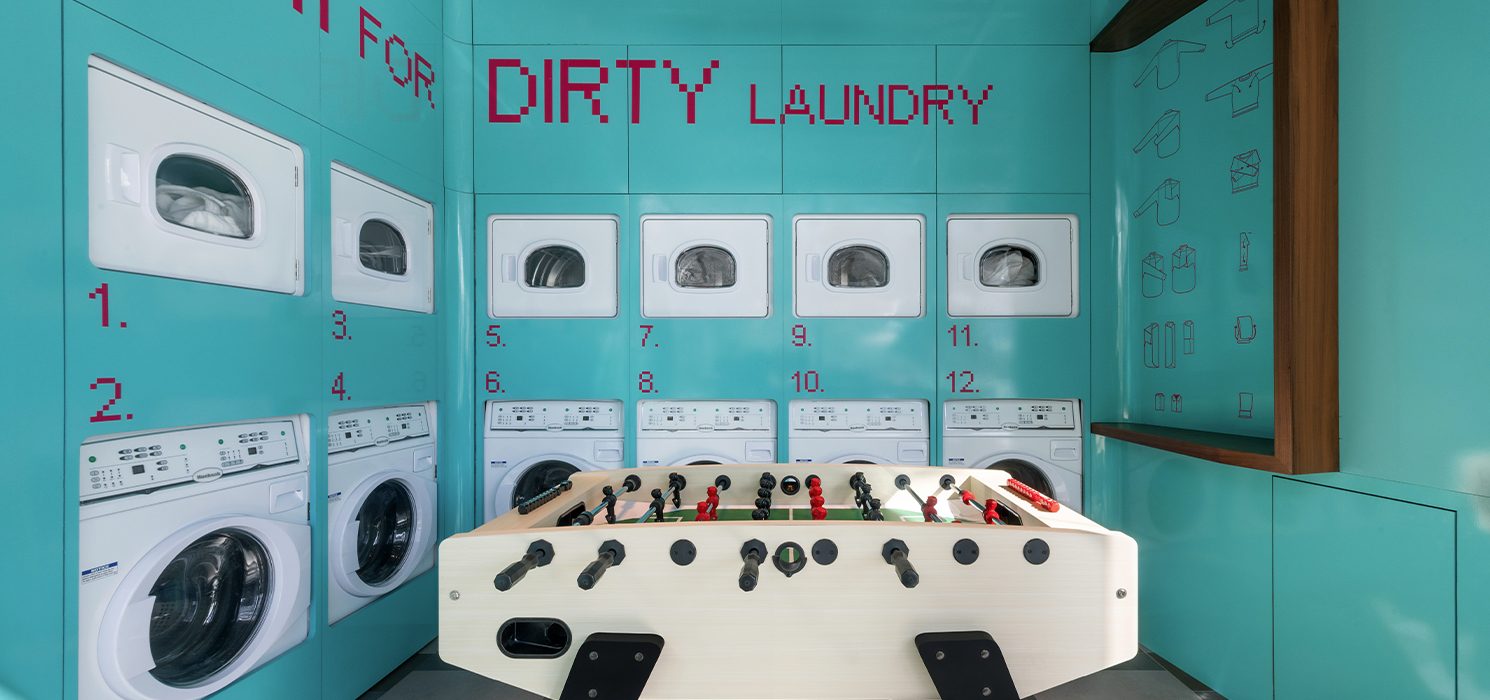
Benefits of choosing Hive Coliv
Step inside HIVE's 120-unit flagship property in Jumeirah Village Circle, and you'll quickly see how people could be drawn to the space. With a rooftop pool, open-air cinema, library, gamer’s room, coworking space, fitness centre and even a pet grooming facility, it’s packed with amenities. But, it's about much more than simply a beautiful building. Every corner has a purpose, and its purpose is to connect.
From the moment a resident walks in, they feel an instant sense of connection to the community. From the shared chef’s kitchen to the cosy living spaces nestled throughout the building, each space gives residents the opportunity to socialise and interact if they so choose. And, if you aren’t feeling particularly social, remember that there’s always the option to retreat to the peace and quiet of your private apartment at any point. It’s the perfect blend of social interaction when you want it and private space when you don’t.
Technology, Salto's locking system
HIVE’s strong focus on flexibility and convenience is a major appeal to their modern digital-savvy audience, as it makes life easier in so many ways. From the very beginning, HIVE saw the need to integrate tech within the space and began collaborating with partners to improve and streamline the coliving experience even further.
HIVE uses SALTO’s locking system, delivering seamless access control and better experiences for its users. Residents have keyless access to their private apartments as well as all communal spaces.
“We don’t have any traditional key systems. We have digital locks throughout the entire building,” notes HIVE founder, Bass Ackermann. “Residents have fobs, but they can also use their phones for access. They can also grant people remote access. It’s quite a novel feature in our region…and something that tenants really enjoy and find very useful.”
Residents can also access the community app to find out about events, meet their neighbours and help them better utilise the building. HIVE has also incorporated heat mapping to identify where the most popular spaces are located, and at what times they are busiest.
Flexibility/Convenience
The community is designed to be more flexible, convenient, and socially connected than traditional living arrangements. Residents can enjoy a variety of amenities and services that make life easier and more comfortable. With flexible leases, all-inclusive monthly bills and ‘plug and play’ furnished apartments, residents have the ultimate freedom to create a living solution and an experience that works for them.
Connection
Finding your place in a city like Dubai can be difficult, especially if you’re one of the 200,000 expats that move there every single year, looking for a sense of home. HIVE makes it easy to find opportunities to connect with a full weekly social calendar.
For example, this week you can hang with your neighbours and their pets at the “Breakfast & Doggos Meet-Up.” Or, join in on “Yoga with Tijana,” and follow it up with Taco Tuesday celebrations…because, we all need a little balance, right?
“How we’ve designed the space was always to facilitate the community, and not impose community,” notes Ackermann.
And, it’s clear they’ve done their job well. Although there is an in-house full-time community facilitator, much of the programming is user-generated; meaning members are more than just passive participants in a busy event schedule. Residents are choosing to actively participate in growing and building the community themselves. This is what real community is all about.
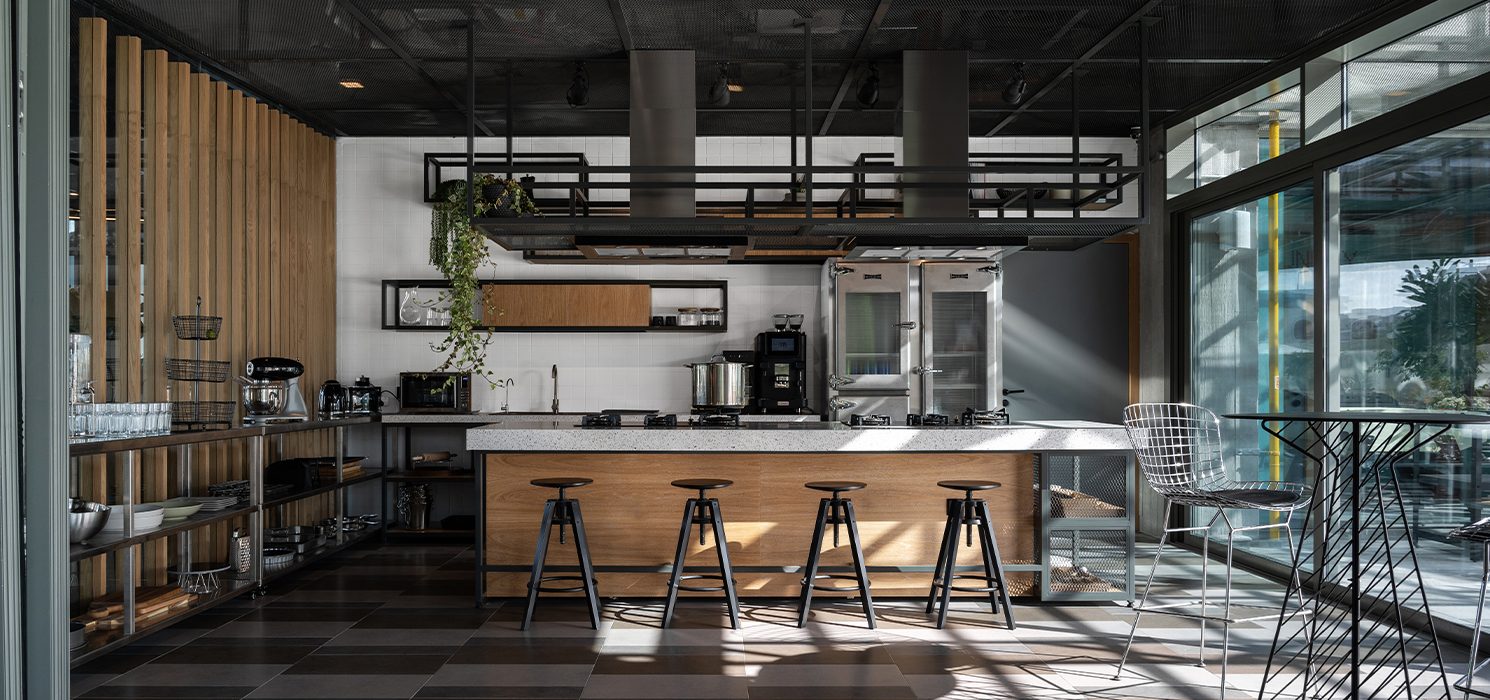
What makes a solid coliving user experience?
Well, if you were to follow the above approach (and I suggest you do,) you make life easier in every way. You”ll make a person feel at home. Because, when our interactions are easier, more natural and more intuitive, we do tend to feel at home, don’t we?
From keyless entry enabling us ease of access to our apartments, to design that makes social connections feel effortless, modern shared living is giving people what they want; comfort, connection, ease and most importantly, a sense of belonging.
Coliving is more than just shared living. For those lucky enough to experience it in spaces like HIVE, coliving is community. Coliving is home.
Keep an eye out for the fourth of our Coliving Series which will focus on community experience and will also feature the winner of the latest edition of the Coliving Awards in a special category supported by SALTO.
Discover how you can offer your residents a great experience with the seamless keyless experience for Shared Living Spaces.
